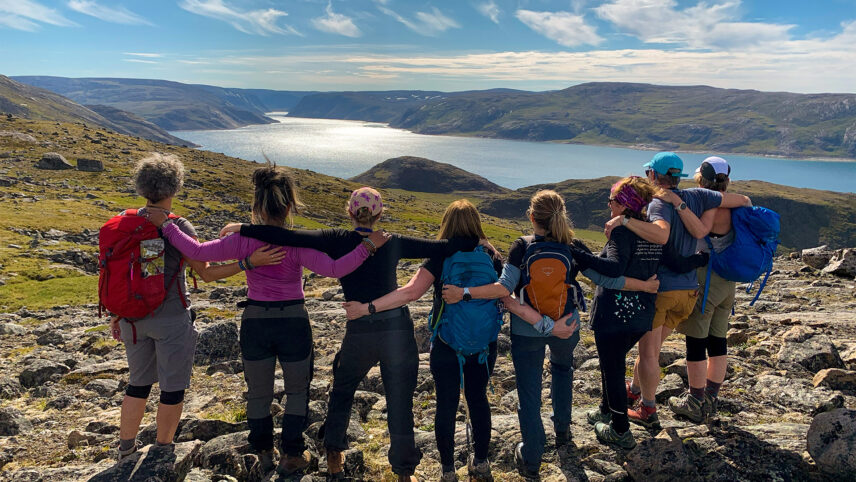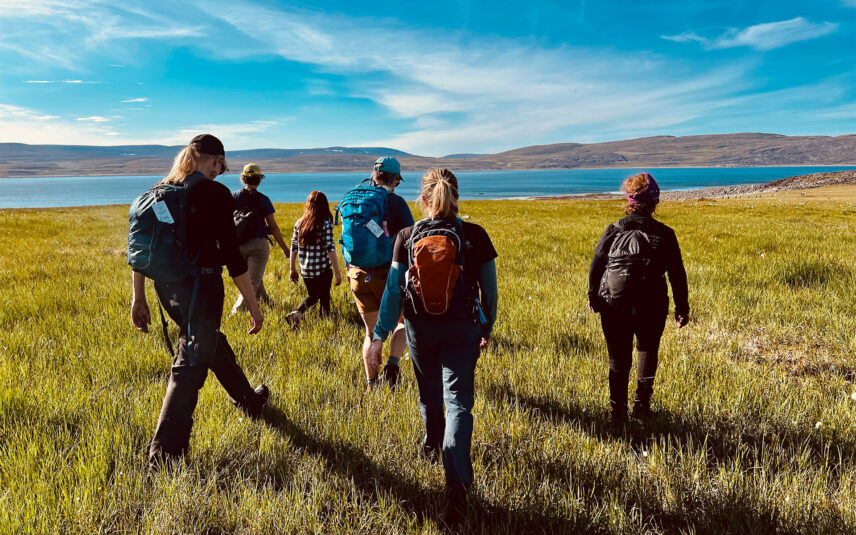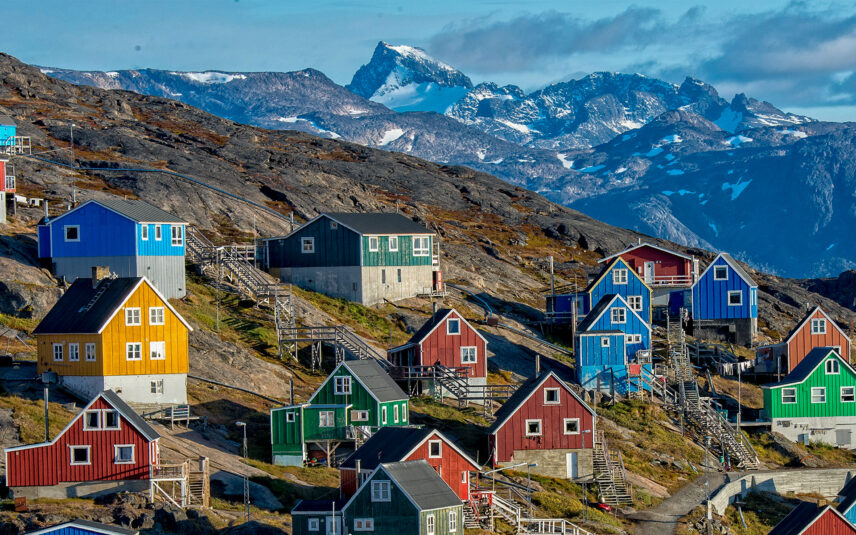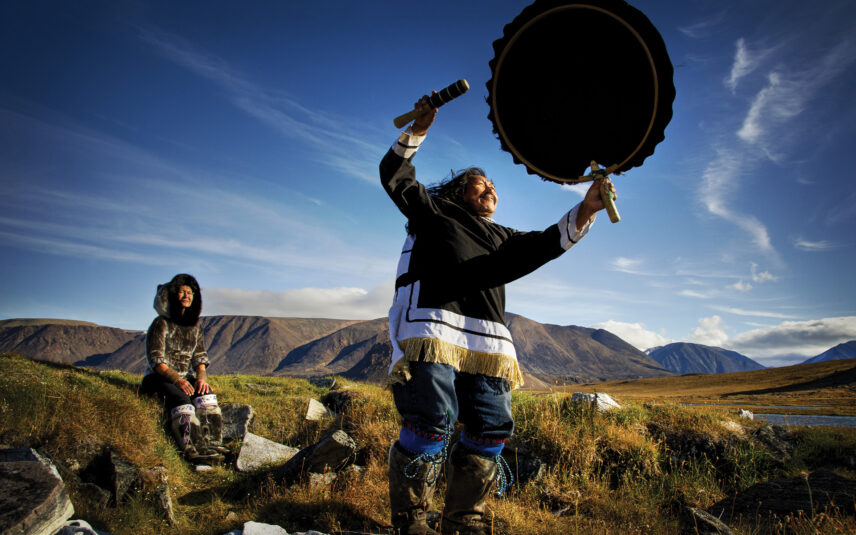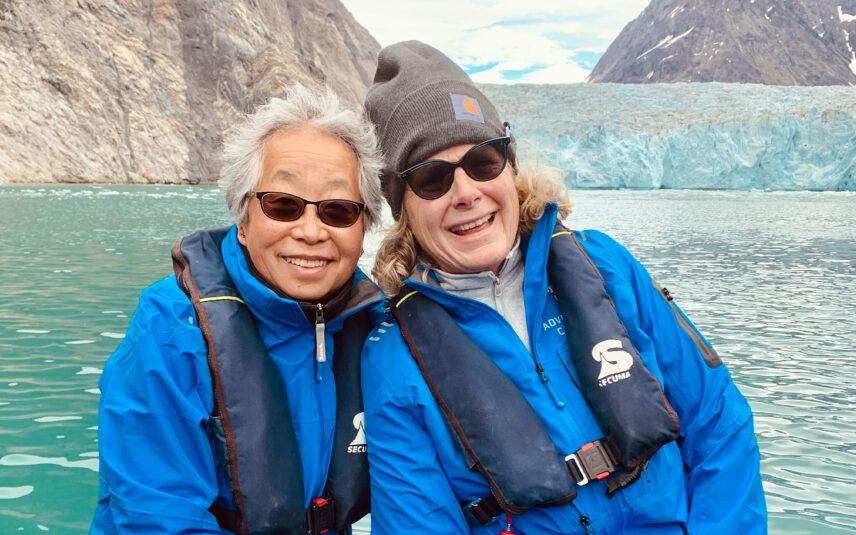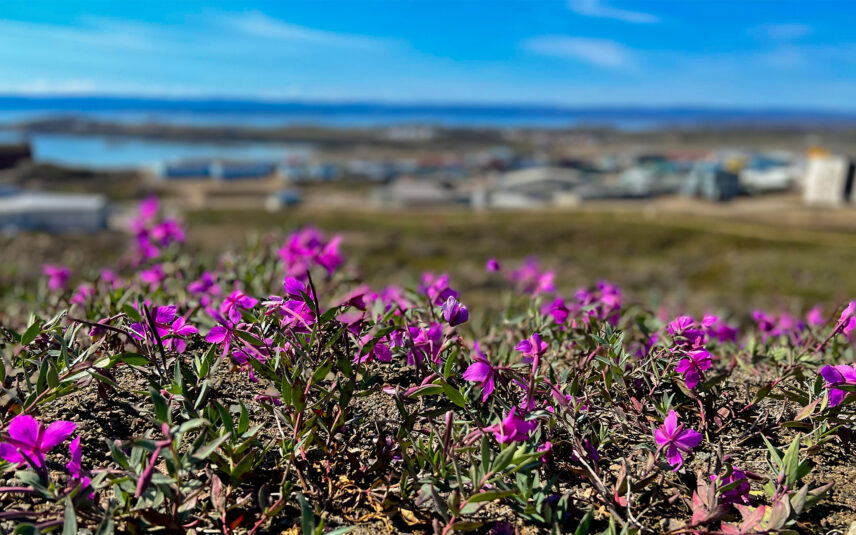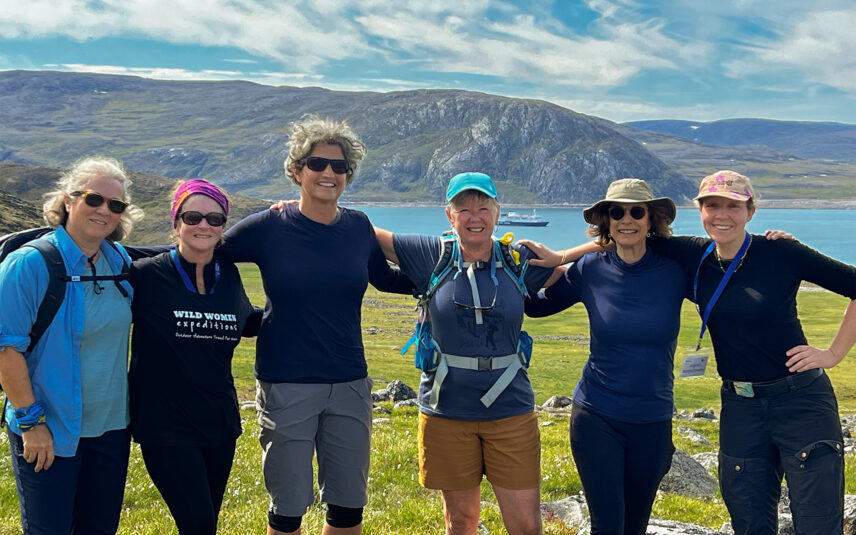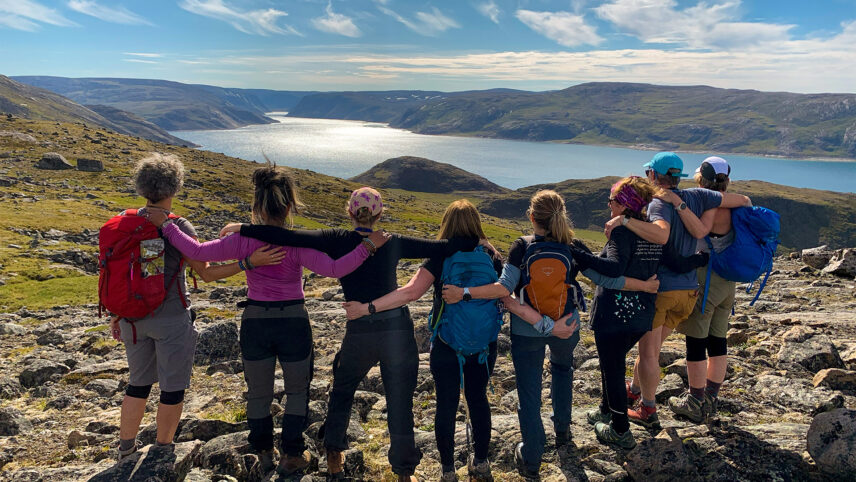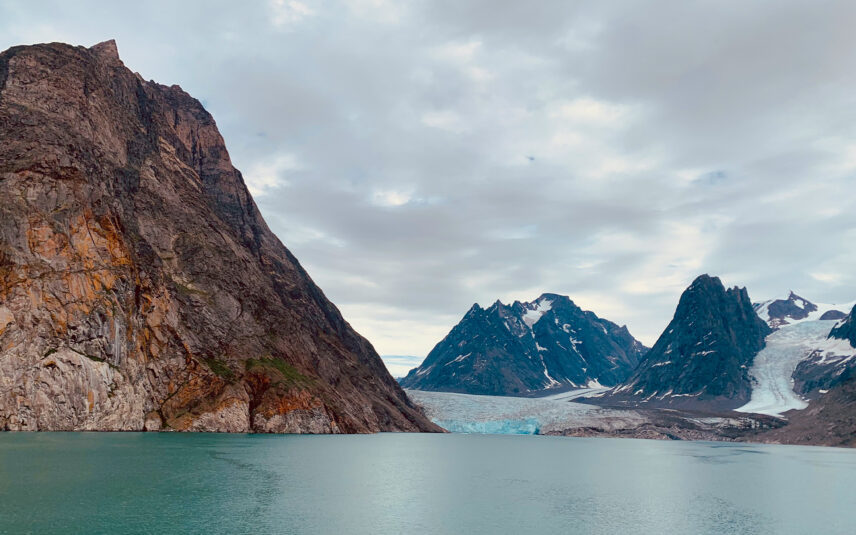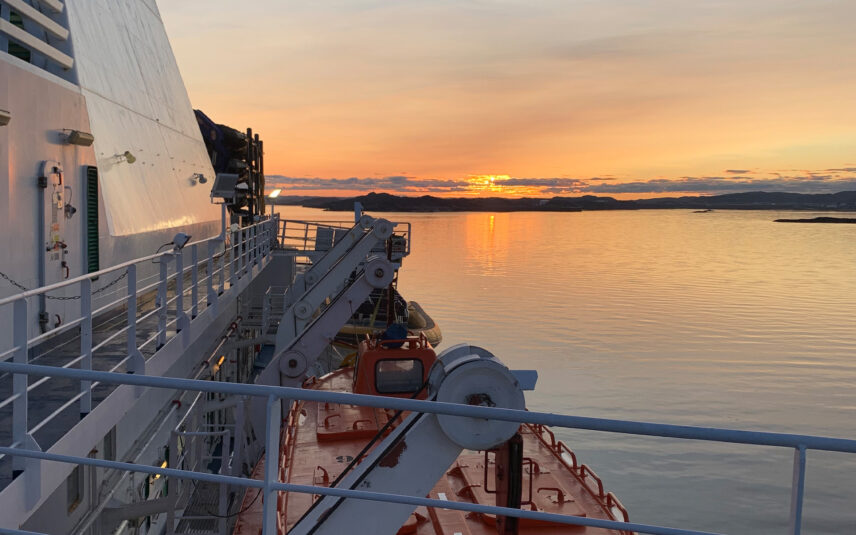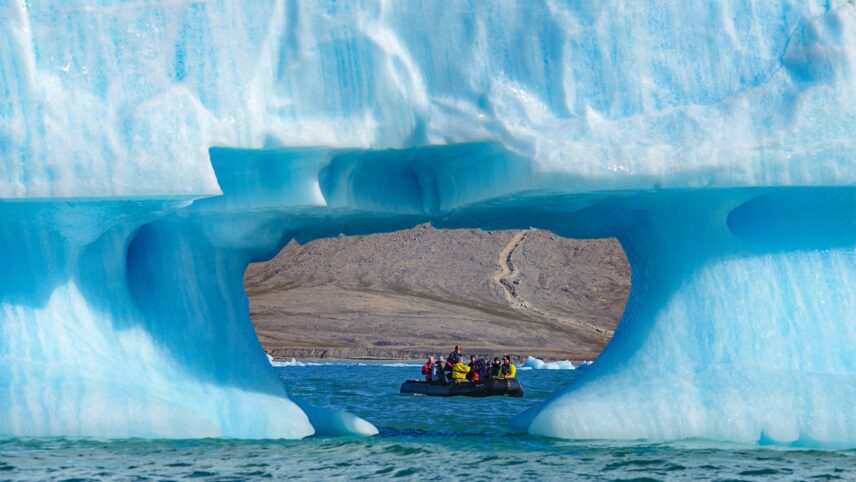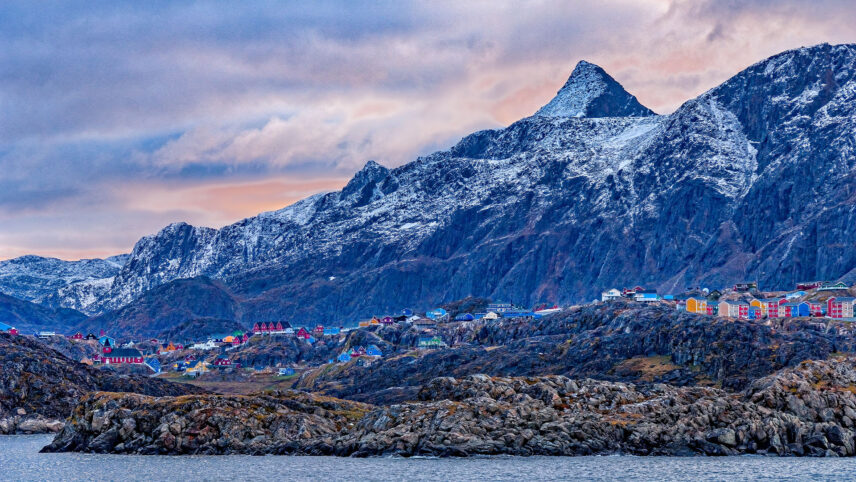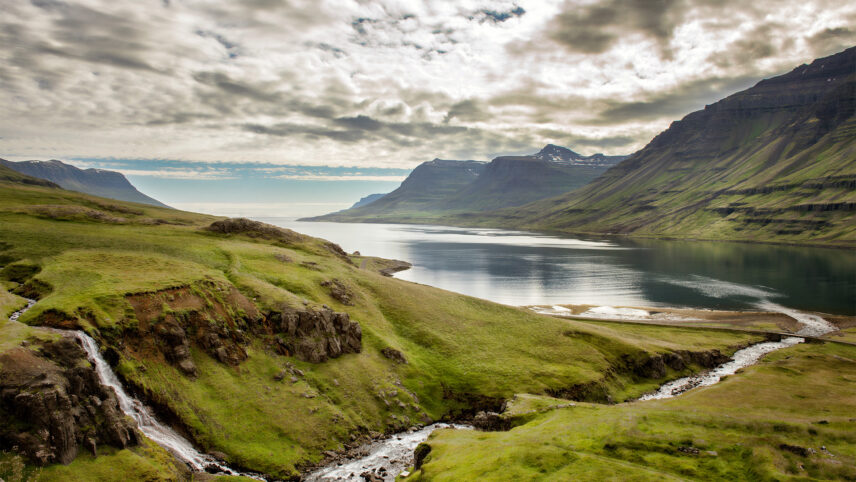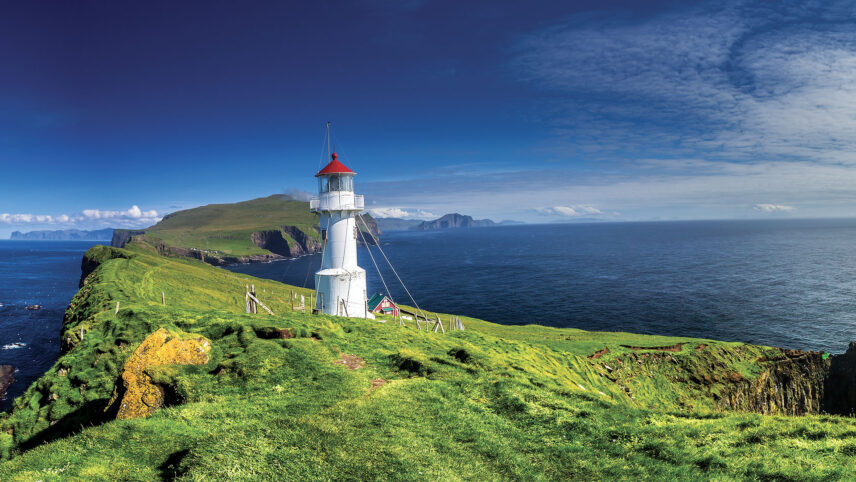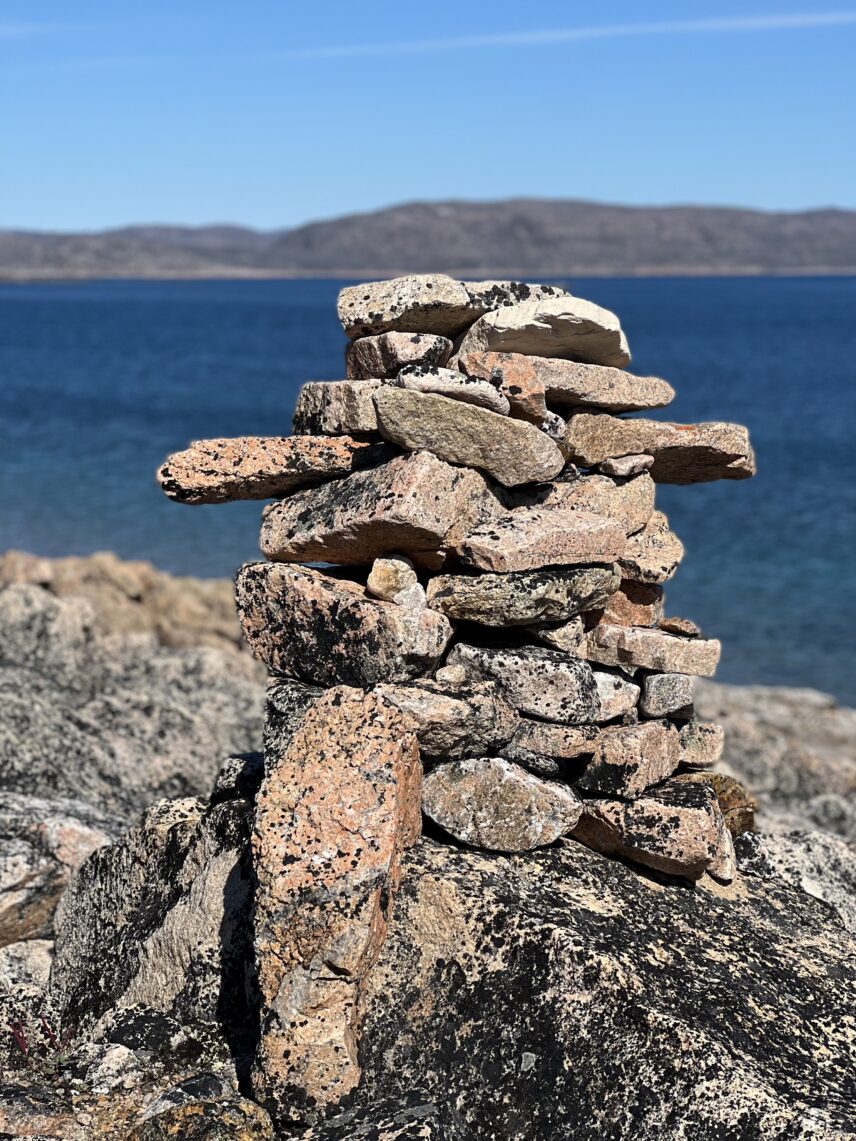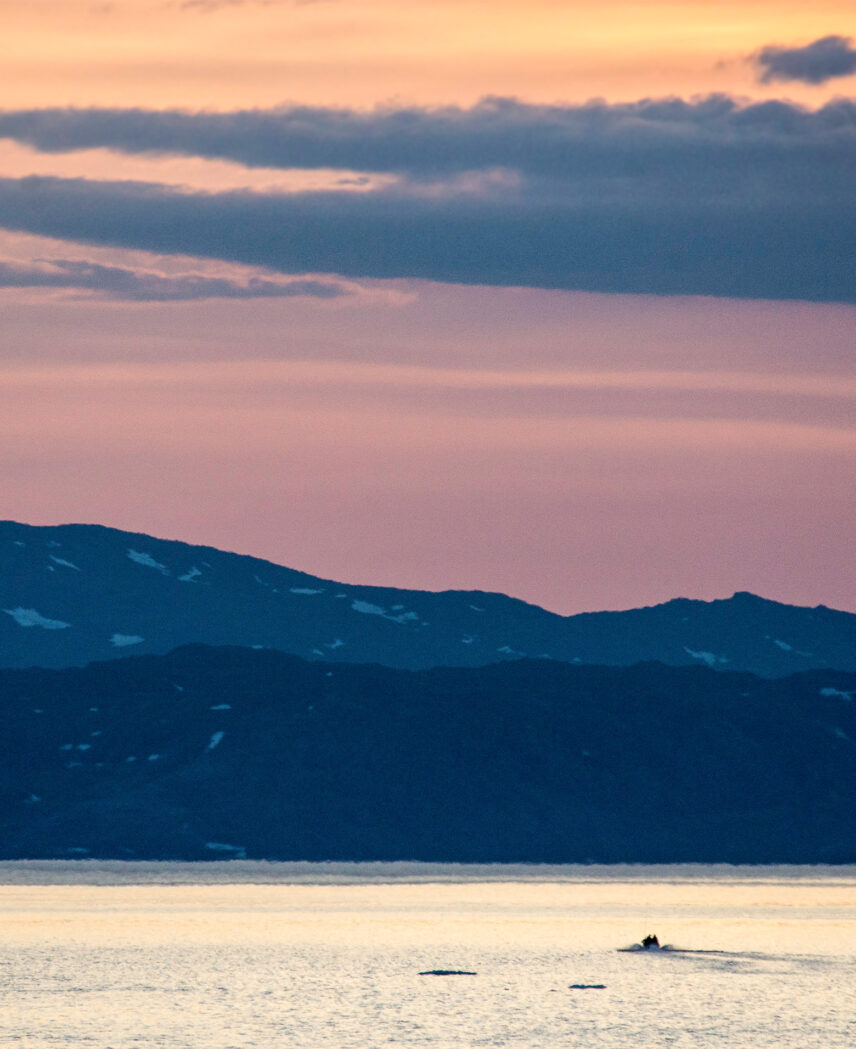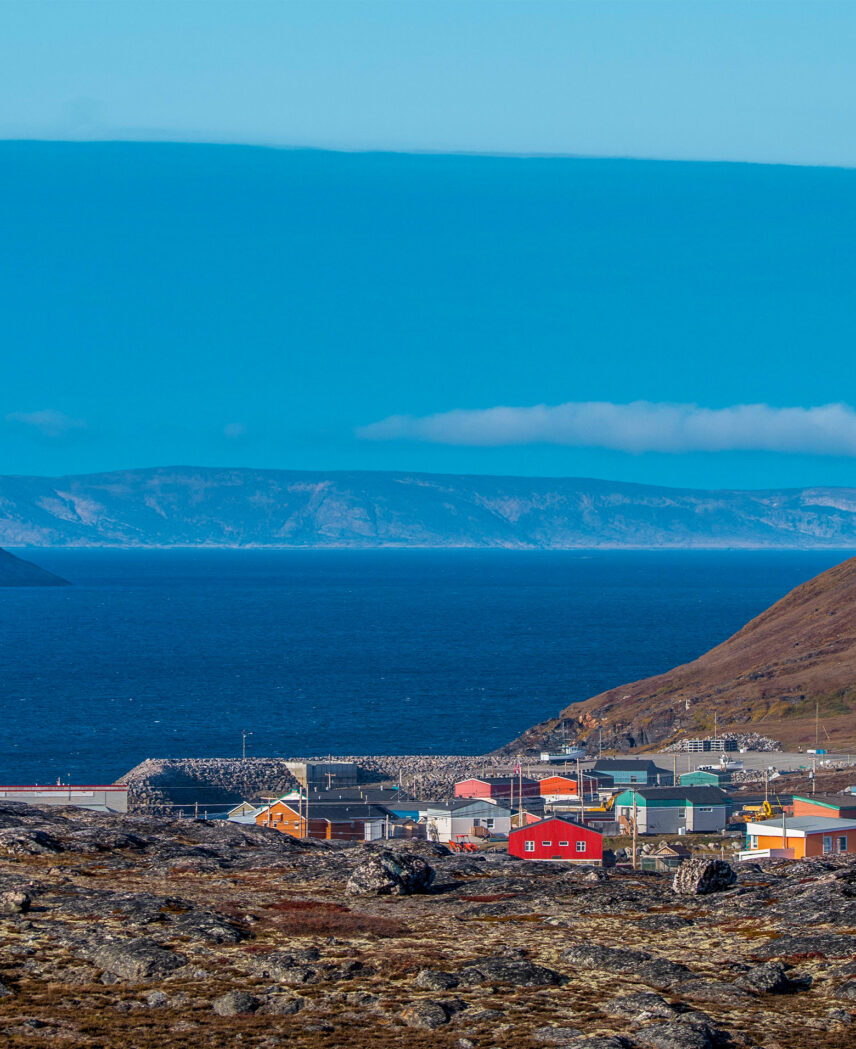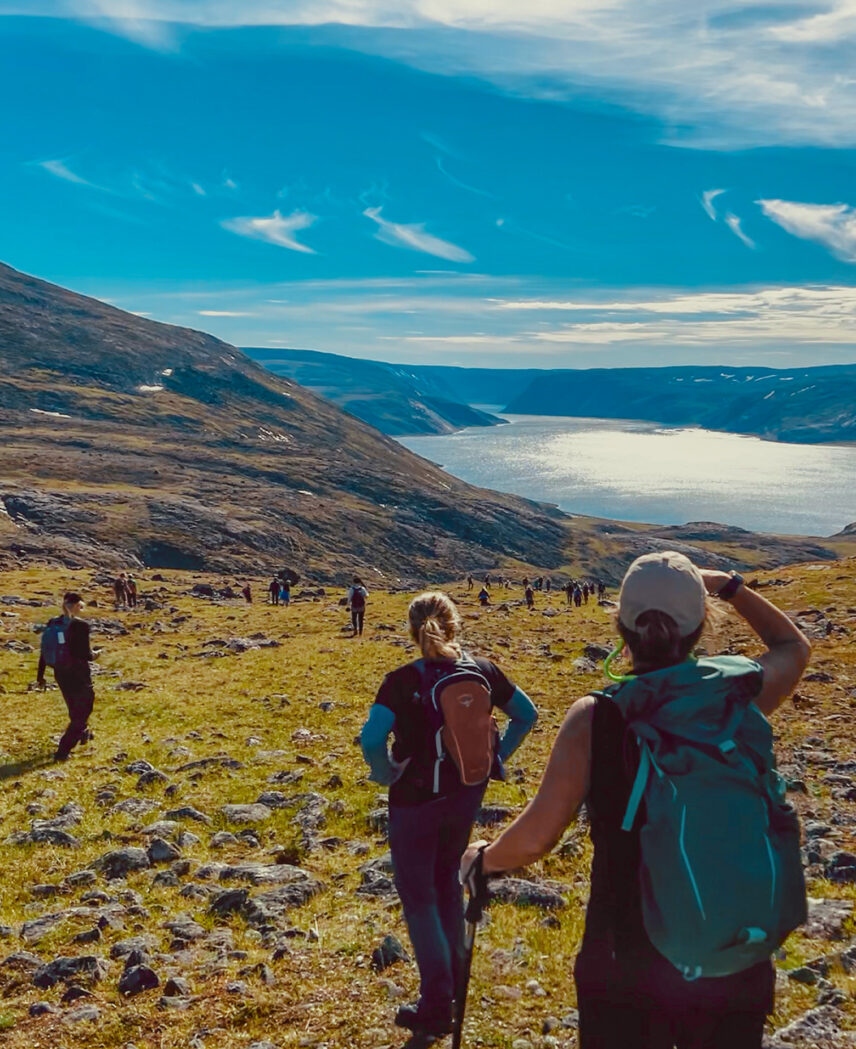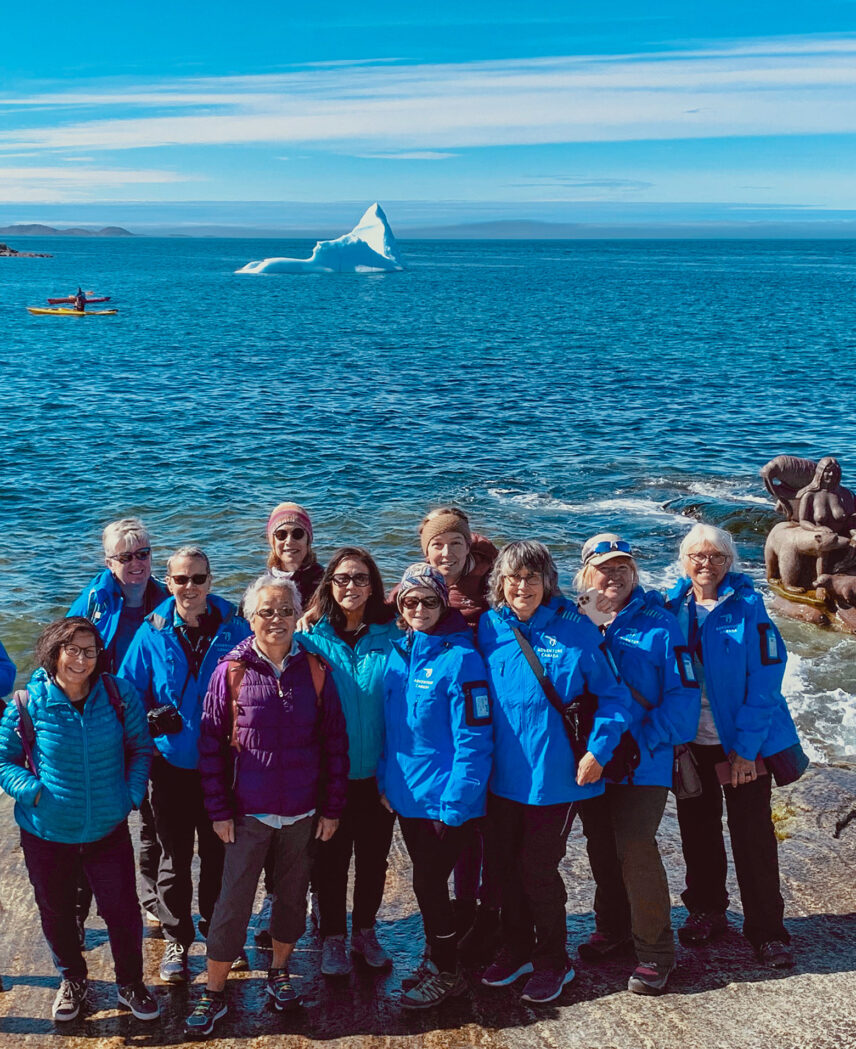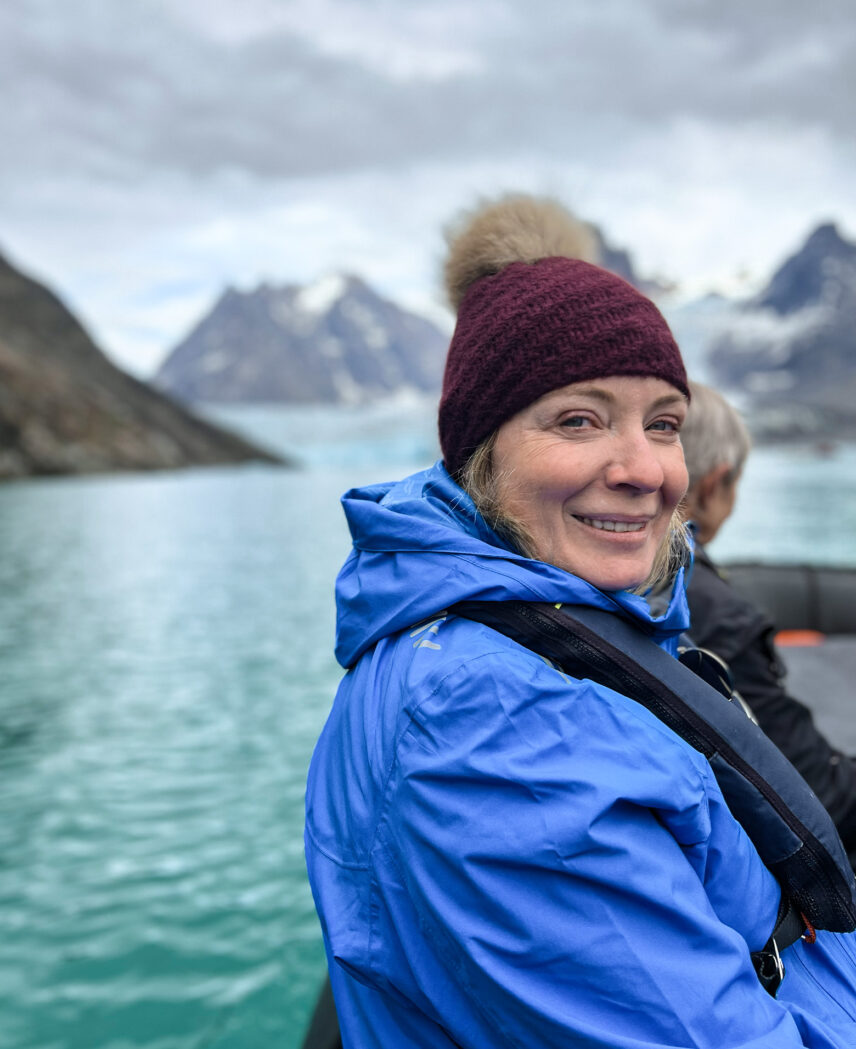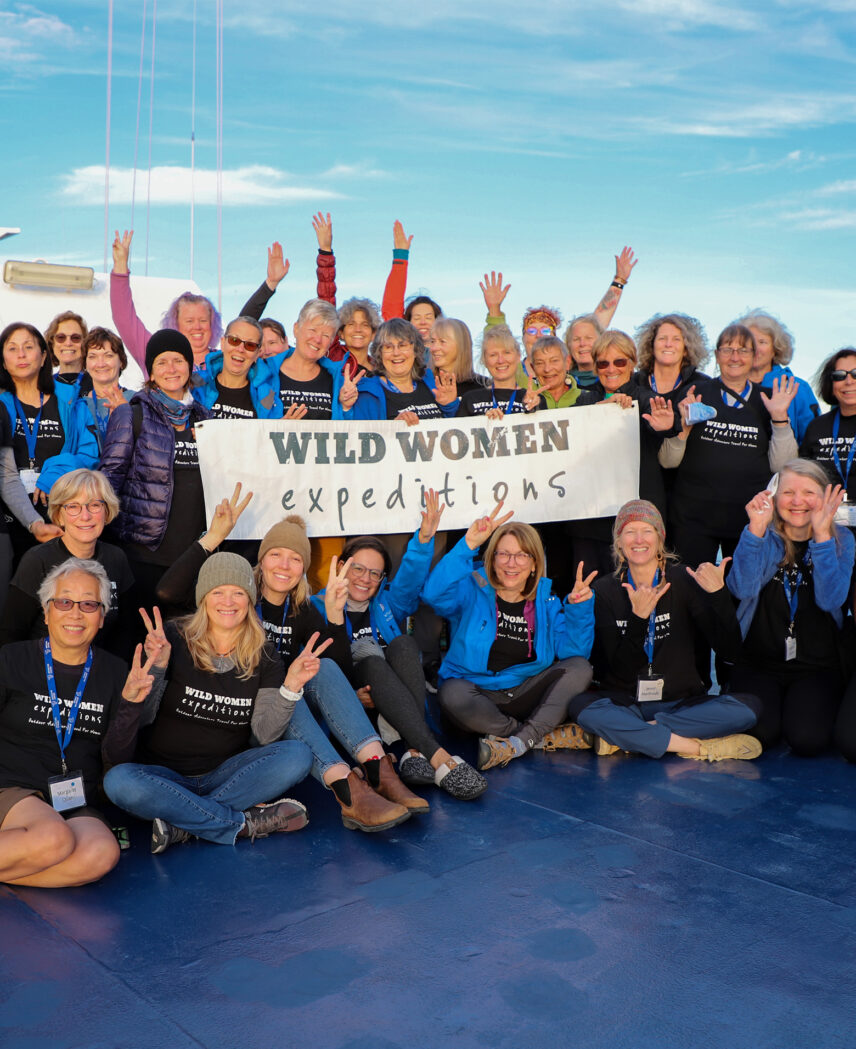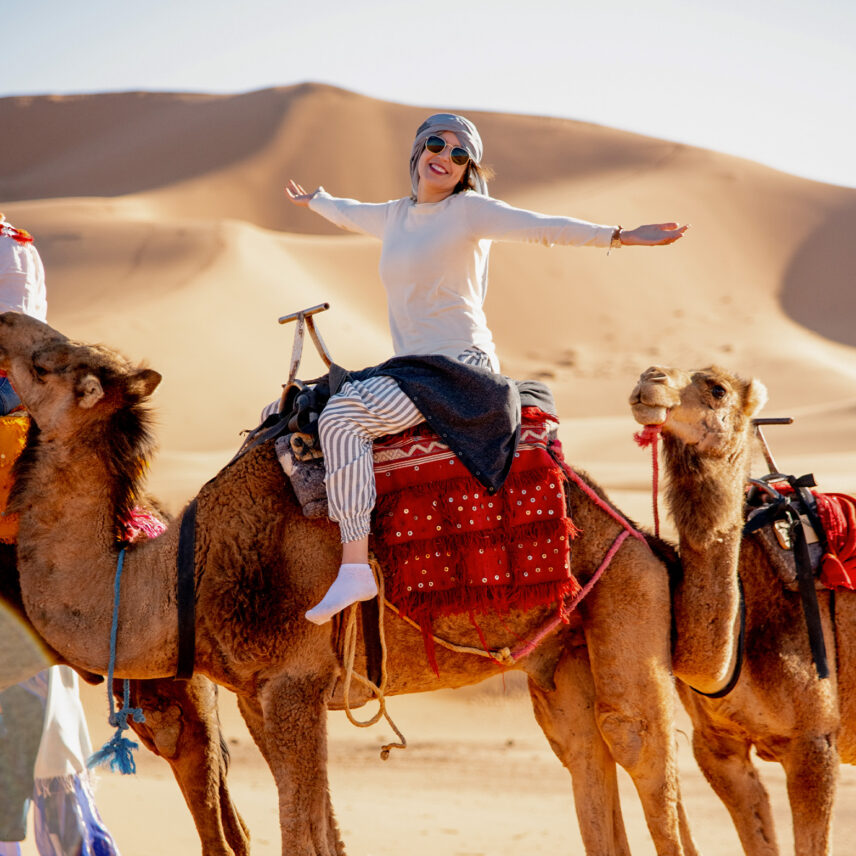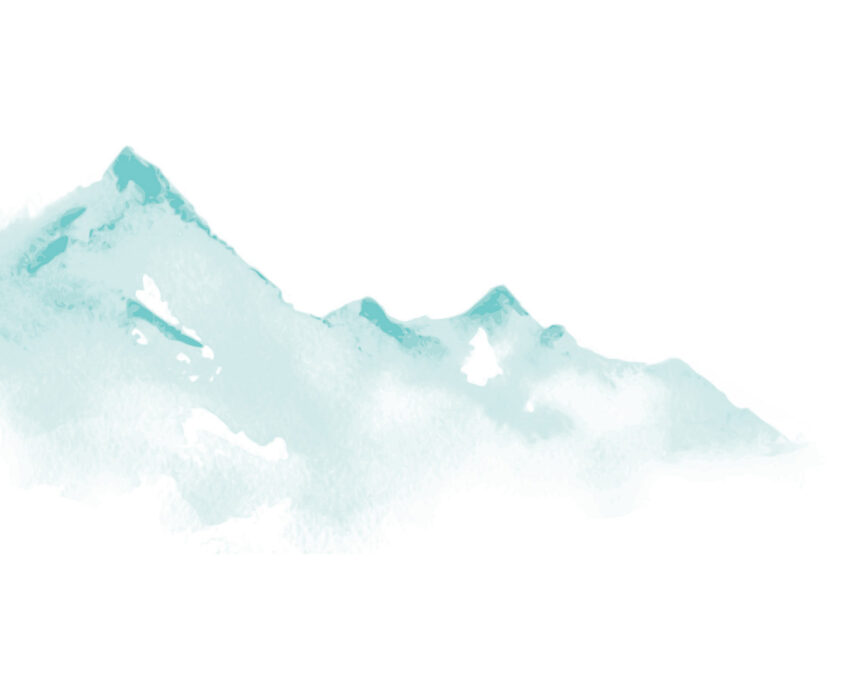

Trip Overview
Departures
Click for Dates + Prices
Duration
13 Days
Activities
Boating/Rafting
Cultural
Hiking
Small-Ship Expedition
Wildlife Viewing
Physical Rating
Easy
Be the First to Know
Interested in this trip? Get on the list for exclusive information and updates.

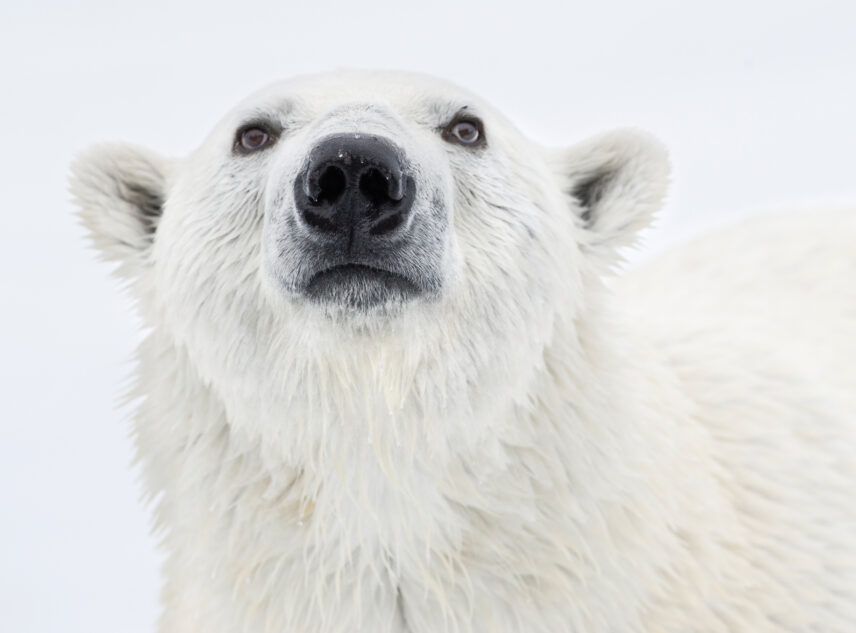
Photo: Andrew Stewart
Experience the Midnight Sun
On this timeless navigation, the panoramic fjords, inlets and uninhabited isles of Frobisher Bay, Baffin Island, Ungava Bay and Greenland merge to offer a meditative dose of beauty and bounty. High above the 55th parallel, we explore the treeless tundra of Nunavik, Quebec’s northernmost region. From the ship, by Zodiac and on foot, we seek out the incredible species that call this matchless region home—whales, bears and caribou!
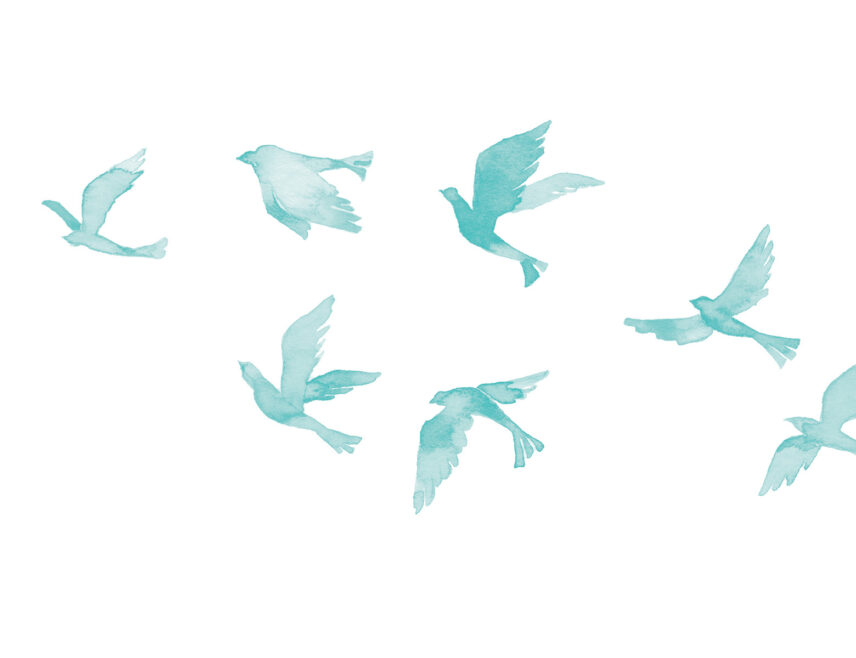
Polar Plunge into the Extreme
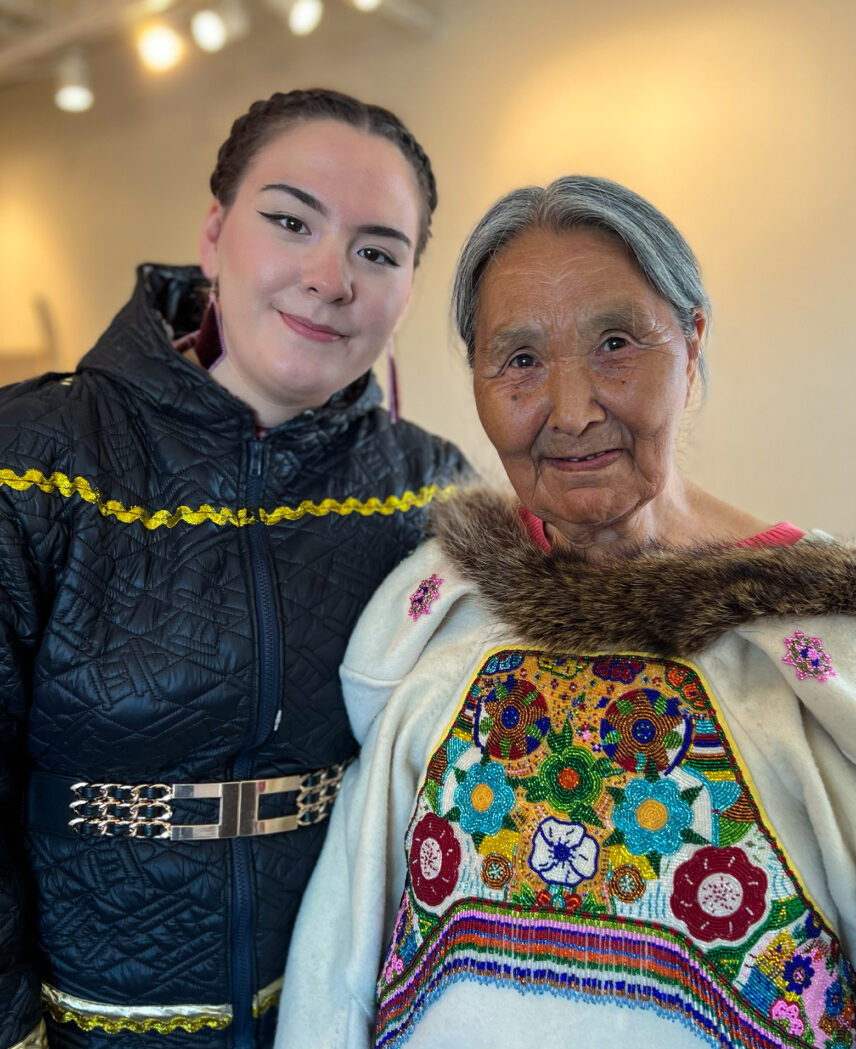
Learn About Arctic Art
Spend time in the company of local knowledge keepers, recognized Arctic experts, historians and naturalists. Meet the gifted Inuit artists of South Baffin Island’s famous artistic communities. Their ancient and contemporary expressions through sculpture and carvings communicate Arctic life and the Inuit connection to the land. Before we travel the historic Hudson and Davis Strait in the shadow of explorers and fur traders, we’ll visit the printmaking studios, ivory scrimshaw and jewelry workshops of Kinngait and Kimmirut.
This ‘Heart of the Arctic’ trip exceeded my expectations. I can’t stop raving to everyone about what an amazing trip it was. The Expedition Leaders and educators, crew, staff, food and care were top notch. I would highly recommend this trip.”
Patti S.
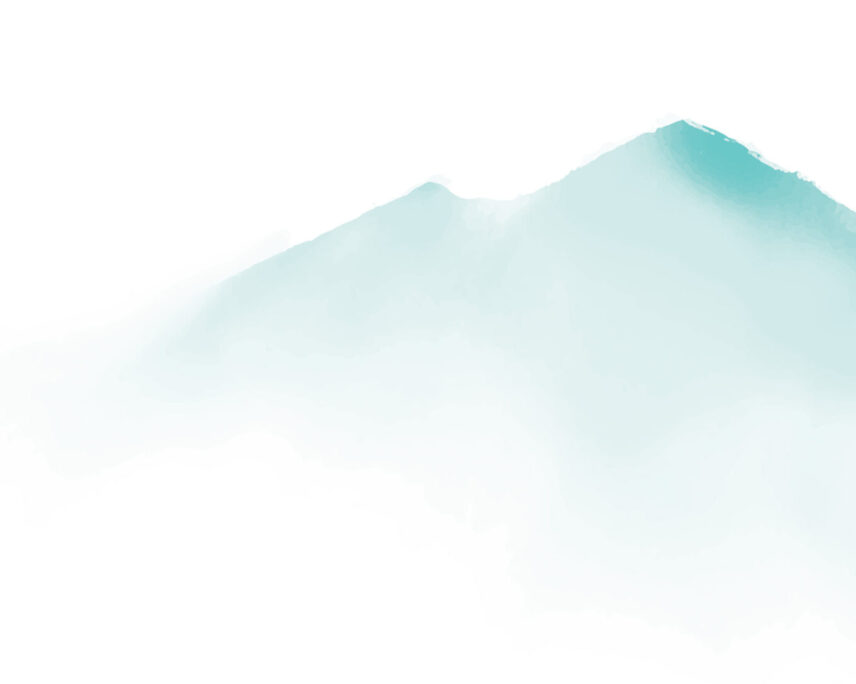
2024 Itinerary
-
Day 1
Iqaluit, Nunavut
Harboring Feelings
We start our adventure by boarding a northbound charter flight from Ottawa, Ontario to Iqaluit. Situated at the chilly head of Frobisher Bay, Iqaluit is Nunavut’s capital (population: 8,000).
In Inuktitut, Iqaluit means “place of many fish” and it’s easy to become hooked! An instant bite of the distinct culture is visible on menus offering pan-seared Arctic char, turbot tacos and muskox burgers.
The Nunatta Sunakkutaangit Museum and Unikkaarvik Visitor Centre are magnetic attractions in addition to the territorial Legislature and the igloo-inspired St. Jude’s Cathedral (referred to as the “Igloo Cathedral”). A myriad of shops and galleries displaying Inuit carvings make for a full afternoon.
Via Zodiac, we transfer to the Ocean Endeavour through the Iqaluit harbor. Is your heart pounding with anticipation yet?
Included Meals
All on-board meals
Accommodations
Your cabin on the Ocean Endeavour
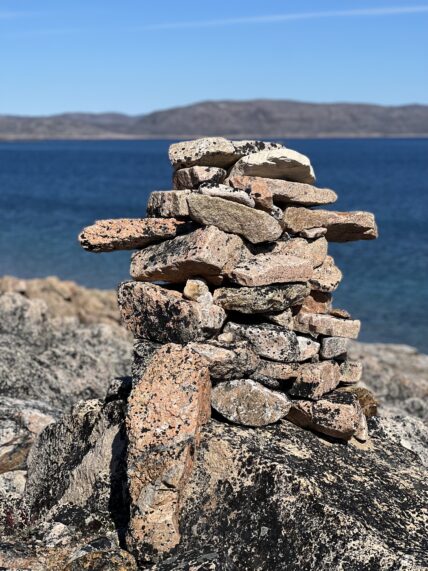
-
Day 2
Iqaluit, Nunavut
Finding Balance
We gain quick appreciation for the fine balance shared between wildlife and humans living in isolated Arctic communities like Iqaluit (Frobisher Bay). Located on an inlet of the Davis Strait in the Qikiqtaaluk Region of Nunavut, Iqaluit is dense with mistaken identities, wrong turns, fur and gold.
Between 1955 and 1987, the settlement of Iqaluit was known as Frobisher Bay. In 1576, Martin Frobisher was a turned-around English explorer on a quest to find the elusive Northwest Passage. His easy shortcut to China was a bust, as was his discovery of gold. Appropriately, it was fool’s gold.
Hot on his heels, commercial whalers introduced ships and trade to the area and the British Government transferred sovereignty of the Arctic archipelago to the Canadian government. Fast forward to the early 1900s: the whaling industry collapsed, the fur trade took precedence and missionaries arrived as did a Hudson’s Bay Company trading post.
Included Meals
All on-board meals
Accommodations
Your cabin on the Ocean Endeavour
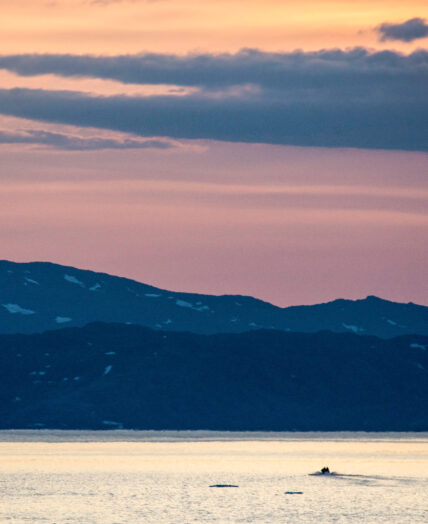
Photo Credit: Dennis Minty
-
Day 3
Kimmirut
Etched Memories
Kimmirut (Lake Harbour) means “the heel” in Inuktitut and refers to an outcrop of marble across the bay from the community. Located on the south shore of the Meta Incognita Peninsula on Baffin Island, this hamlet of 400 reverted to its Inukitut name in 1996.
As Kimmirut is home to one of the first Hudson’s Bay Company outposts on Baffin Island, the trapping skills of the Inuit were immediately recognized and capitalized on. Art has also played a monumental role in this community. Local artists create fine jewelry utilizing semi-precious stones like sapphire, zircon, moonstone, garnet and lapis lazuli—all of which have all been discovered in the region. Kimmirut is also synonymous with highly polished ivory scrimshaw and jewelry depicting animals and Arctic life etched into whale teeth, bone or walrus tusks.
Included Meals
All on-board meals
Accommodations
Your cabin on the Ocean Endeavour
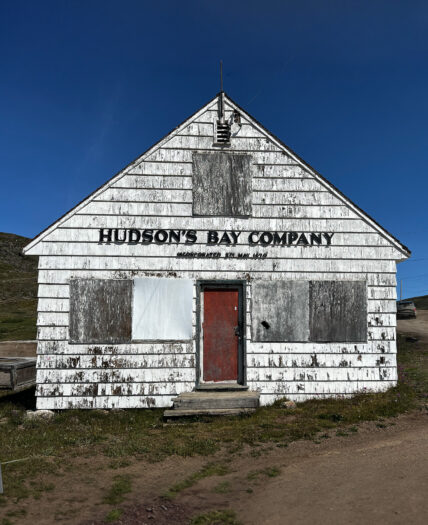
-
Day 4
Kinngait
Arctic Arts
In 2020, Kinngait reverted back to its original name (from Cape Dorset)—it means “mountains” in Inuktitut. This creative Dorset Island hamlet located near Foxe peninsula is a coveted Inuit art market hotbed. In 1959, the West Baffin Eskimo Co-operative was established to showcase the talents of carvers, illustrators and printmakers. The Co-op includes Toronto-based Dorset Fine Arts, which helps to extend the artists’ audience further south and globally.
The professional printmaking studio is one of the oldest in Canada and is now called the Kinngait Studios. It’s an integral part of the Kenojuak Cultural Centre.
Old and new generations of artists, carvers and printmakers continue to make Kinngait the beating heart of Inuit art. We visit a few studios and meet the legendary artists. There will be an opportunity to purchase an Arctic memento that will continue to transport us back to the tundra and our pinch-me Wild Women expedition.
Included Meals
All on-board meals
Accommodations
Your cabin on the Ocean Endeavour
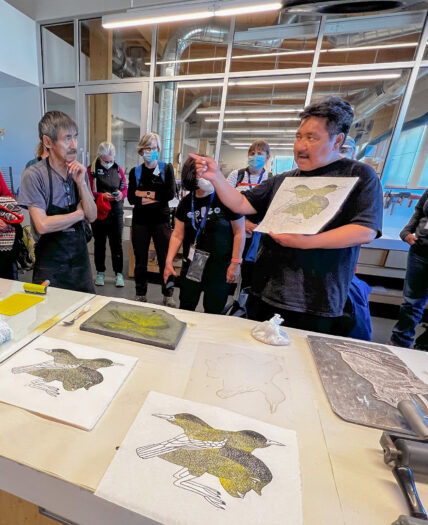
-
Day 5
Hudson Strait
Sea’s the Day
English explorer Henry Hudson successfully navigated the strait in 1610 and it became the main marine artery for the Hudson’s Bay Company. Today, we navigate the fast-moving waters of the 497 mile-long (800 km) Hudson Strait. The outstretched arm of the Atlantic Ocean between Nunavut’s Baffin Island and Quebec links Hudson Bay and Foxe Basin with the Labrador Sea. Did you follow that bouncing ball?
Join expert expedition staff on deck as we scan for skulking polar bears, rasping walrus, lunging whales, barking seals and careening seabirds together!
Included Meals
All on-board meals
Accommodations
Your cabin on the Ocean Endeavour
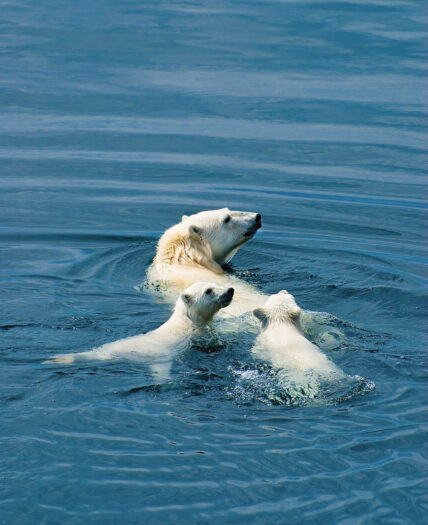
Photo Credit: Stephen Gorman
-
Days 6 & 7
Ungava Peninsula
Geology and Gin
Along the Ungava Peninsula of Nunavik, Quebec, we explore an area of treeless tundra dissected by rivers, glacial lakes rich in geology (especially iron ore deposits) and flora.
Speaking of flora, Quebec’s signature Ungava Gin is sunshine gold in color with a Nordic juniper nose. It’s a blend of six rare Arctic botanicals that are found underfoot: Nordic juniper, wild rose hip, Labrador tea, crowberry, Arctic blend and cloudberry.
We have the unique opportunity to hike among the fragrant gin ingredients and take advantage of random wildlife and bird encounters on a Zodiac excursion along the inlets and islands that pepper the peninsula.
Included Meals
All on-board meals
Accommodations
Your cabin on the Ocean Endeavour
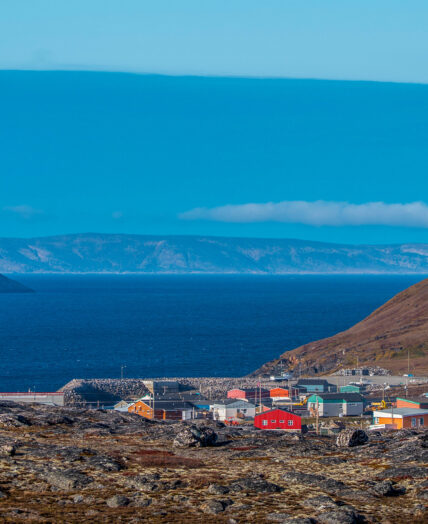
-
Days 8 & 9
Ungava Bay
The Birds and the Breeze
In the winter, Ungava Bay is choked with a tumbler of first-year ice rubble. By summer, the bay clears and has recorded some of the highest tides in the world, including a 56-foot (17 m) tide in the Bay of Leaves (Baie aux Feuilles). Hold on to your hat and gin!
Ungava Bay is a thriving and impressive ecosystem. By Zodiac, we comb the shorelines and any outlying ice in an attempt to spot polar bears and walrus. Here, endangered belugas and Canada’s largest number of breeding Akpat (thick-billed murres) mingle. We visit the uninhabited Akpatok Island, the biggest island in Ungava Bay, at over 559 square miles (900 km). It’s named for the Akpats that nest on the precarious limestone ledges and cliffs.
Ungava Bay’s basin is a peculiar mix of black spruce, dwarf birch, lichens, sphagnum moss, northern Labrador tea, sedge, peat-filled depressions, moraines and volcanic rock.
Included Meals
All on-board meals
Accommodations
Your cabin on the Ocean Endeavour
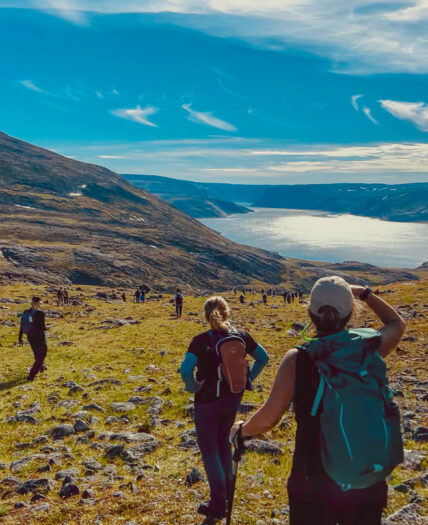
-
Day 10
Davis Strait
Unicorns of the Sea
The Davis Strait is the ocean expanse that links southeastern Baffin Island and southwestern Greenland. Narwhals, bowhead and pilot whales cruise through the strait though sightings are dependent on zooplankton and schools of fish. Inuit fishermen have also relied on these shallow waters for Arctic char.
Baffin Bay’s estimated population of 50,000 narwhals accounts for 80 to 90% of the world’s population. The “unicorns of the sea” are playful year-round residents of Baffin Bay, feeding and mating in the winter.
This is an ideal time to kick back and scout the northern Atlantic for unicorns, minke, humpbacks, auks and other unexpected pop-up wildlife. Find a seat in a workshop, watch a documentary or take advantage of the ship’s amenities! There’s a gym, library or bar—and plenty of wandering Wild Women eager to keep you company if you want to chat, chill or sweat it out!
Included Meals
All on-board meals
Accommodations
Your cabin on the Ocean Endeavour
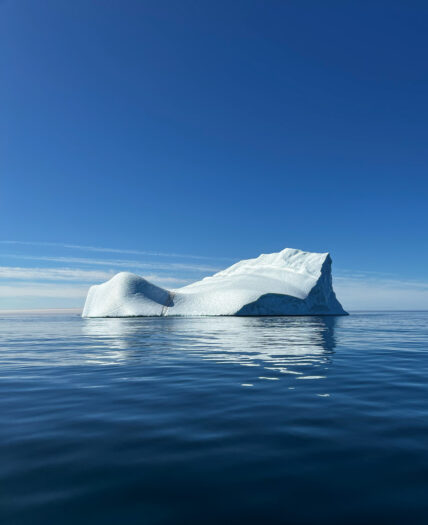
-
Day 11
Nuuk, Greenland
Pop-up Polkas and Mummies
Nuuk, the brightly-painted capital of Greenland, is a collision of nature, modernity and tradition. The Old Harbor is a reflection of Danish colonial days, while contemporary Nuuk is known for its cool vibe, minimalist gallery cafes, upmarket Danish steakhouses, boutique shops and rowdy pubs. We may be spontaneously pulled in to join in on a Greenland Polka!
The University of Greenland is Greenland’s only university—and it’s located in Nuuk. Most courses are taught in Danish with a few offered in Greenlandic. West Greenlandic is the official dialect that all children learn in addition to Danish and English. Greenlandic words can be extremely long but they often convey an entire sentence.
The Greenland National Museum is one of Nuuk’s treasures. Don’t miss the opportunity to see the Inuit skin boats and 15th-century Qilakitsoq mummies. Move over Tutankhamun! There’s a new mummy in town!
Included Meals
All on-board meals
Accommodations
Your cabin on the Ocean Endeavour
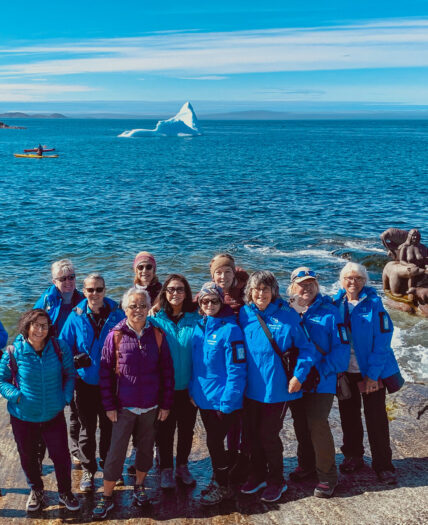
-
Day 12
Kangerlussuatsiaq Fjord
A Sensory Massage
Greenland’s west coast is simply stunning—it’s one big panoramic postcard of superlatives. From daunting mountains to the tiniest sprays of tundra flowers, our stop in this area is one that has everyone stamping their feet in a tantrum when it’s time to leave.
Hikers, birders, poets, photographers, daydreamers and self-proclaimed philosophers all fall under the coastal spell. Later, we can reflect and revel in the day’s total sensory massage in the sauna or hot tub.
Included Meals
All on-board meals
Accommodations
Your cabin on the Ocean Endeavour
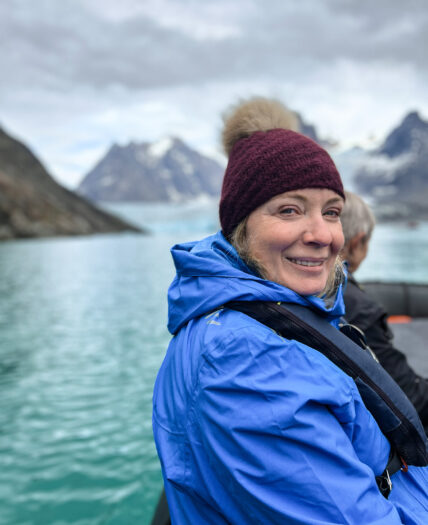
-
Day 13
Kangerlussuaq
Anchored Friendships
In the early morning, we complete our overnight journey up the 104 mile-long (168 km) Kangerlussuaq Fjord (Søndre Strømfjord). Søndre Strømfjord is Danish for “big fjord.” Encircled by a mountain hug and bobbing glaciers, it’s bisected by the imaginary line of the Arctic Circle.
The Greenlandic word for goodbye is “baaj” though we know you’ll be reluctant to part this surreal landscape and the Wild Women you’ve found fast friends with.
We transfer to shore by Zodiac then board a bus to the airport for our southbound charter flight to Toronto, Ontario.
Baaj. Sounds a lot like waaaah, doesn’t it? Maybe it’s time to start plotting our next expedition!
Included Meals
All on-board meals
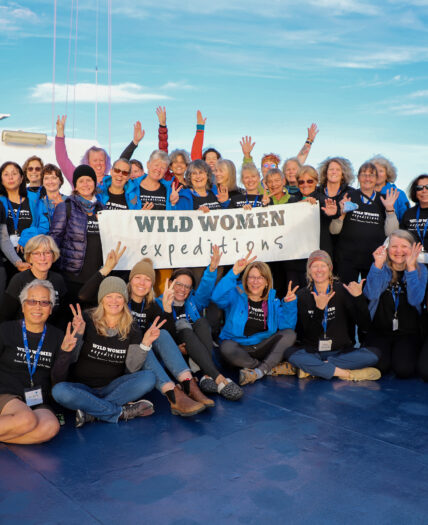
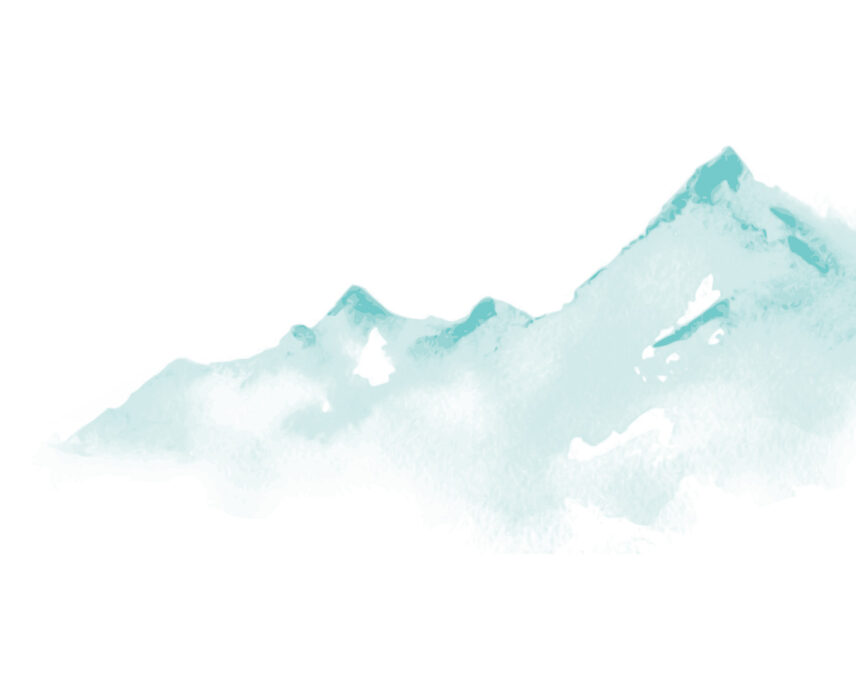
2025 Itinerary
-
Day 1
Kangerlussuaq, Greenland
Harboring Feelings
We start our adventure by boarding a northbound charter flight from Toronto (Ontario) to Kangerlussuaq, Greenland, site of a former US Air Force base.
Via Zodiac, we transfer to the Ocean Endeavour to begin our navigation of the 118 mile-long (190 km) Kangerlussuaq Fjord (Søndre Strømfjor is Danish for “big fjord”). Encircled by a big mountain hug and bobbing glaciers, this fjord is bisected by the imaginary line of the Arctic Circle which we will cross!
Is your heart-pounding with anticipation yet?
Included Meals
All on-board meals
Accommodations
Your cabin on the Ocean Endeavour

-
Day 2
Kangerlussuatsiaq Fjord
Sensory Massage
Greenland’s west coast is simply stunning—the complex coastal waterway is one big panoramic postcard of superlatives. From calving glaciers to sheer cliffs peppered with seabirds, the daunting mountains and tiniest sprays of tundra flowers offer both visuals that are both micro and macro.
Kangerlussuatsiaq means “the rather big fjord” in Greenlandic, while the Danish name (Evighedsfjorden) translates to “the fjord of eternity.” The extreme vastness and silence consumes hikers, poets, photographers, daydreamers and self-proclaimed philosophers. This is the kind of place where epiphanies unfold! We take a Zodiac cruise to the foot of a towering glacier and learn more about the West Greenland current and the (relatively) warmer waters of this subarctic region.
Later, we can reflect and revel in the day’s total sensory massage in the sauna or hot tub.
Included Meals
All on-board meals
Accommodations
Your cabin on the Ocean Endeavour

-
Day 3
Nuuk, Greenland
Pop-up Polkas and Mummies
Nuuk, the brightly-painted capital of Greenland, is a collision of nature, modernity and tradition. The Old Harbor is a reflection of Danish colonial days, while contemporary Nuuk is known for its cool vibe, minimalist gallery cafes, upmarket Danish steakhouses, boutique shops and rowdy pubs. We may be spontaneously pulled in to join in on a Greenland Polka!
The University of Greenland is Greenland’s only university—and it’s located in Nuuk. Most courses are taught in Danish with a few offered in Greenlandic. West Greenlandic is the official dialect that all children learn in addition to Danish and English. Greenlandic words can be extremely long but they often convey an entire sentence.
The Greenland National Museum is one of Nuuk’s treasures. Don’t miss the opportunity to see the Inuit skin boats and 15th-century Qilakitsoq mummies. Move over Tutankhamun! There’s a new mummy in town!
Included Meals
All on-board meals
Accommodations
Your cabin on the Ocean Endeavour

-
Day 4
The Davis Strait
Unicorns of the Sea
The Davis Strait is the ocean expanse that links southeastern Baffin Island and southwestern Greenland. Narwhals, bowhead and pilot whales cruise through the strait though sightings are dependent on zooplankton and schools of fish. Inuit fishermen have also relied on these shallow waters for Arctic char.
Baffin Bay’s estimated population of 50,000 narwhals accounts for 80 to 90% of the world’s population. The “unicorns of the sea” are playful year-round residents of Baffin Bay, feeding and mating in the winter.
Kick back with binoculars and scout the northern Atlantic for unicorns, minke, humpbacks, auks and other unexpected pop-up wildlife. Or, find a seat in a workshop, watch a documentary or test your agility in an interactive cultural performance of Inuit games. This time on board provides the unique opportunity to learn more about the cultural traditions and history from Inuit expedition leaders eager to share stories of their homeland.
We can also take advantage of the ship’s amenities–there’s a gym, library or bar—and plenty of wandering Wild Women to keep company. Chat, chill or sweat it out!
Included Meals
All on-board meals
Accommodations
Your cabin on the Ocean Endeavour

-
Day 5 & 6
Ungava Bay
The Birds and the Breeze
In the winter, Ungava Bay is choked with a tumbler of first-year ice rubble. By summer, the bay clears and has recorded some of the highest tides in the world, including a 56-foot (17 m) tide in the Bay of Leaves (Baie aux Feuilles). Hold on to your hat and gin!
Ungava Bay is a thriving and impressive ecosystem. By Zodiac, we comb the shorelines and any outlying ice in an attempt to spot polar bears and walrus. Here, endangered belugas and Canada’s largest number of breeding Akpat (thick-billed murres) mingle. We visit the uninhabited Akpatok Island, the biggest island in Ungava Bay, at over 559 square miles (900 km). It’s named for the Akpaits (thick-billed murres) that nest on the precarious limestone ledges and cliffs—it’s also home to Canada’s largest colony of breeding pairs.
Ungava Bay’s basin is a peculiar mix of black spruce, dwarf birch, lichens, sphagnum moss, northern Labrador tea, sedge, peat-filled depressions, moraines and volcanic rock. We take a Zodiac cruise in the large and shallow waters of the bay to scout the shorelines in search of polar bears, walrus and marine life like the endangered beluga.
Included Meals
All on-board meals
Accommodations
Your cabin on the Ocean Endeavour

-
Day 7 & 8
Ungava Peninsula, Quebec
Geology and Gin
Along the Ungava Peninsula of Nunavik, Quebec, we explore an area of treeless tundra dissected by rivers, glacial lakes rich in geology (especially iron ore deposits) and flora. Inuit cultural educators will guide you through their treasured homeland with moving stories of resilience and resourcefulness.
Speaking of flora, Quebec’s signature Ungava Gin is sunshine gold in color with a Nordic juniper nose. It’s a blend of six rare Arctic botanicals that are found underfoot: Nordic juniper, wild rose hip, Labrador tea, crowberry, Arctic blend and cloudberry.
We have the unique opportunity to hike among the fragrant gin ingredients and take advantage of random wildlife and bird encounters on a Zodiac excursion along the inlets and islands that pepper the peninsula.
Included Meals
All on-board meals
Accommodations
Your cabin on the Ocean Endeavour

-
Day 9
Kinngait (Cape Dorset)
Arctic Arts
In 2020, Kinngait reverted back to its original name (from Cape Dorset)—it means “mountains” in Inuktitut. This creative Dorset Island hamlet located near Foxe peninsula is a coveted Inuit art market hotbed. In 1959, the West Baffin Eskimo Co-operative was established to showcase the talents of carvers, illustrators and printmakers. The Co-op includes Toronto-based Dorset Fine Arts, which helps to extend the artists’ audience further south and globally.
The professional printmaking studio is one of the oldest in Canada and is now called the Kinngait Studios. It’s an integral part of the Kenojuak Cultural Centre.
Old and new generations of artists, carvers and printmakers continue to make Kinngait the beating heart of Inuit art. We visit a few studios and meet some of the legendary artists. There will be an opportunity to purchase a one-of-a-kind Arctic memento that will continue to transport us back to the tundra and our pinch-me Wild Women expedition.
Included Meals
All on-board meals
Accommodations
Your cabin on the Ocean Endeavour

-
Day 10
Hudson Strait
Sea’s the Day
English explorer Henry Hudson successfully navigated the strait in 1610 and it became the main marine artery for the Hudson’s Bay Company. Today, we navigate the fast-moving waters of the 497 mile-long (800 km) Hudson Strait. The outstretched arm of the Atlantic Ocean between Nunavut’s Baffin Island and Quebec links Hudson Bay and Foxe Basin with the Labrador Sea. Did you follow that bouncing ball?
Join expert expedition staff on deck as we scan for skulking polar bears, rasping walrus, lunging whales, barking seals and careening seabirds together! We’ll take advantage of every opportunity to explore the area on foot or by Zodiac in search of the wildlife that calls this biodiverse strait home!
Included Meals
All on-board meals
Accommodations
Your cabin on the Ocean Endeavour

Photo Credit: Stephen Gorman
-
Day 11
Kimmirut (Lake Harbour)
Etched Memories
Kimmirut (Lake Harbour) means “the heel” in Inuktitut and refers to an outcrop of marble across the bay from the community. Located on the south shore of the Meta Incognita Peninsula on Baffin Island, this hamlet of 400 reverted to its Inukitut name in 1996. It’s one of the oldest permanently inhabited spots on Baffin Island.
As Kimmirut is home to one of the first Hudson’s Bay Company outposts on Baffin Island, the trapping skills of the Inuit were immediately recognized and capitalized on. Art has also played a monumental role in this community. Local artists create fine jewelry utilizing semi-precious stones like sapphire, zircon, moonstone, garnet and lapis lazuli—all of which have all been discovered in the region. Kimmirut is also synonymous with highly polished ivory scrimshaw and jewelry depicting animals and Arctic life etched into whale teeth, bone or walrus tusks.
Members of the local community will share compelling stories about the RCMP post, original Hudson Bay post, the Co-op and Anglican church’s influence and impact on Inuit life.
For those who choose to hike, the Itijjagiaq trail that splices through Kimmirut’s blooming tundra is part of the Trans Canada Trail! Stretching 17,398 miles (28,000 km) from coast to coast to coast, the Trans Canada is the longest trail in the world!Included Meals
All on-board meals
Accommodations
Your cabin on the Ocean Endeavour

-
Day 12
Iqaluit
Finding Balance
We gain quick appreciation for the fine balance shared between wildlife and humans living in isolated Arctic communities like Iqaluit (Frobisher Bay). Located on an inlet of the Davis Strait in the Qikiqtaaluk Region of Nunavut, Iqaluit is dense with mistaken identities, wrong turns, fur and gold.
Between 1955 and 1987, the settlement of Iqaluit was known as Frobisher Bay. In 1576, Martin Frobisher was a turned-around English explorer on a quest to find the elusive Northwest Passage. His easy shortcut to China was a bust, as was his discovery of gold. Appropriately, it was fool’s gold.
Hot on his heels, commercial whalers introduced ships and trade to the area and the British Government transferred sovereignty of the Arctic archipelago to the Canadian government. Fast forward to the early 1900s: the whaling industry collapsed, the fur trade took precedence and missionaries arrived as did a Hudson’s Bay Company trading post.
Our onboard geologists will introduce the rocks and landscape they are consumed by in an addictive way.
Included Meals
All on-board meals
Accommodations
Your cabin on the Ocean Endeavour

Photo Credit: Dennis Minty
-
Day 13
Iqaluit, Nunavut
Anchored Friendships
In Inuktitut, Iqaluit means “place of many fish” and it’s easy to become hooked! Situated at the chilly head of Frobisher Bay, Iqaluit is Nunavut’s capital (population: 8,000). An instant bite of the distinct culture is visible on menus offering pan-seared Arctic char, turbot tacos and muskox burgers.
The Nunatta Sunakkutaangit Museum and Unikkaarvik Visitor Centre are magnetic attractions in addition to the territorial Legislature and the igloo-inspired St. Jude’s Cathedral (referred to as the “Igloo Cathedral”). A myriad of shops and galleries displaying Inuit carvings also tempt those seeking a commemorative piece to remind of the expedition.
We’ll transfer to shore by Zodiac through Iqualuit harbour then board a bus to the airport for our southbound charter flight to Ottawa, Ontario. If time and logistics permit, a bus or town tour of Iqaluit may occur but this is not guaranteed.
The Inuktitut word for ‘goodbye to all’ is “tavvauvusi” though we know you’ll be reluctant to say it and part this surreal landscape and the Wild Women you’ve found fast friendships with.
Included Meals
Breakfast


What’s Included
- Passage aboard the expedition ship Ocean Endeavour
- All onboard meals (even if you have seconds)
- Accommodation on the vessel (cabin categories 1–10 are subject to availability)
- A steely team of expert expedition staff
- Guided activities to stretch your legs and mind
- Sightseeing and community visits
- All Zodiac excursions
- Educational programming onboard, interactive workshops and evening entertainment
- A professional camera trial program for all skill levels
- Complimentary expedition jacket
- A handsome contribution to Adventure Canada’s Discovery Fund that supports local youth outreach, community support and habitat projects
- A Wild Women Expeditions Host
- Special access permits, entry and park fees
- Port fees, applicable taxes and the time of your life
What’s Excluded
- 2024:
- Northbound Charter Flight from Ottawa, Ontario (YOW) to Iqaluit, Nunavut (YFB)
Additional fee for 2024: $900 USD - Southbound Charter Flight from Kangerlussuaq, Greenland (SFJ) to Toronto, Ontario (YYZ)
Additional fee for 2024: $1,375 USD
- 2025:
- Northbound Charter Flight from Toronto, Ontario (YYZ) to Kangerlissuaq, Greenland
Additional fee for 2025: $1,450 USD - Southbound Charter Flight from Iqaluit, Nunavut (YFB) to Ottawa, ON (YOW)
Additional fee for 2025: $950 USD
- Gratuities
- Personal expenses
Please Note:
Upon booking, charter flight arrangements will be made for you by Wild Women Expeditions and added to your trip’s final balance.
All applicable taxes are included in the trip price.
25% Off Early Booking Bonus already reflected in trip price.
Adventure Canada itineraries may be subject to change without notice due to weather, ice and sea conditions. Please review our Booking Terms.
The 2025 departure, is the 2024 departure in reverse.
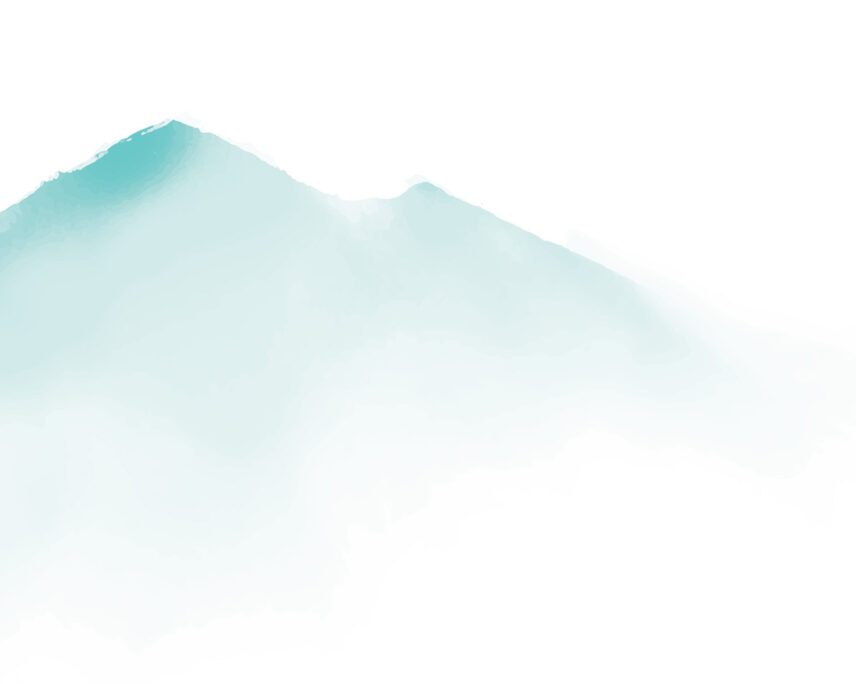
Trip Add-Ons
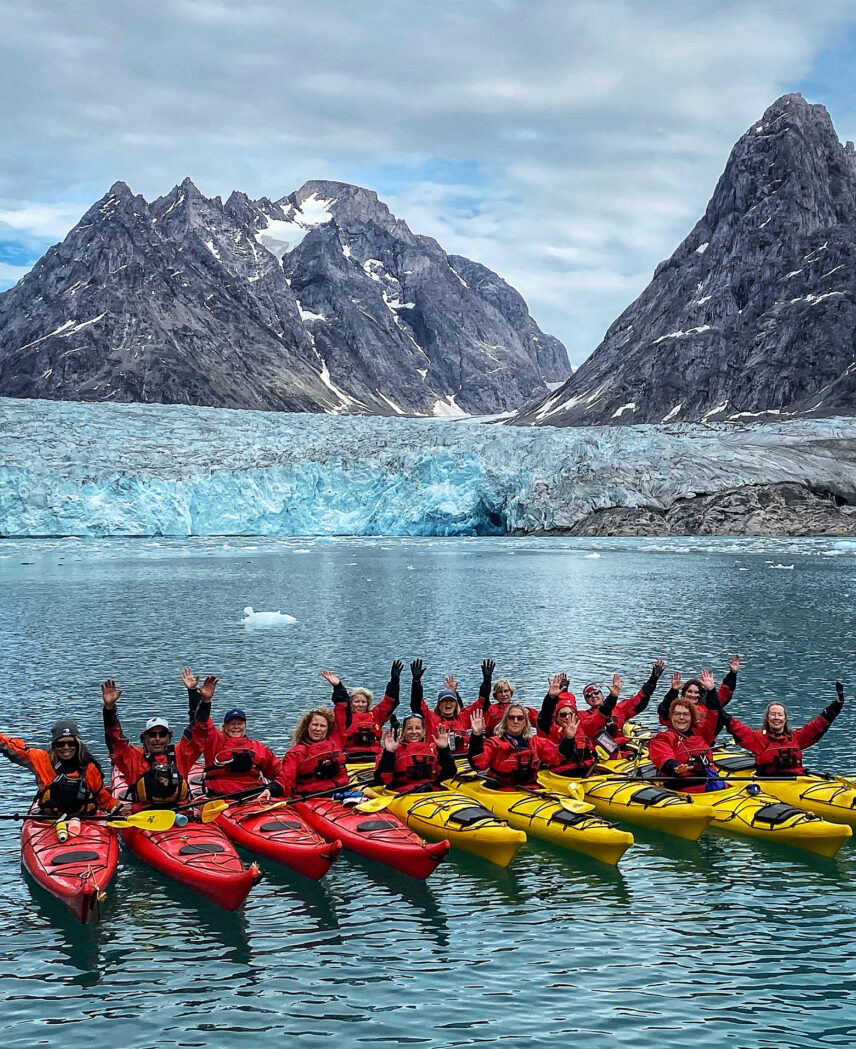
Kayaking
$800 USD Per Person
Join us for this rare opportunity to experience magical places by water. Our qajaq (Inuit for “kayak”) program will bring you through pristine waters, near marine life and along a historic coastline. Limited space is available per departure, and an application process is required for this activity. Some kayaking experience is required.
*Prices may vary based on departure dates.

Bicycle Rentals
Explore the stunning Arctic landscape on two wheels. A fleet of Kona mountain bikes is available for rent during set times throughout each expedition. Cycling excursions are only available in predetermined community visits, and passengers will be notified when they are available one to two days in advance of the excursion of the daily recap.
*Prices may vary based on departure dates.
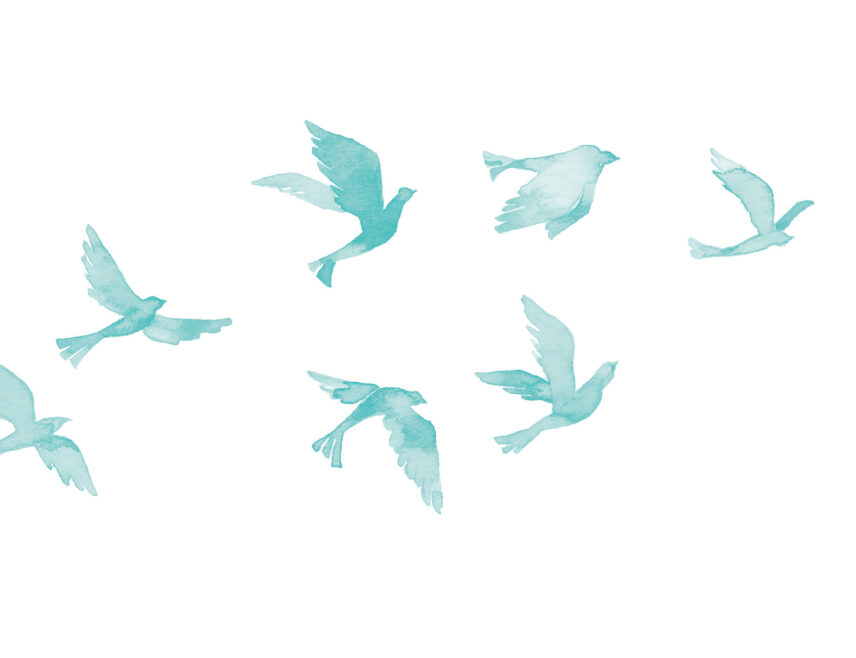
The Ship & Cabins
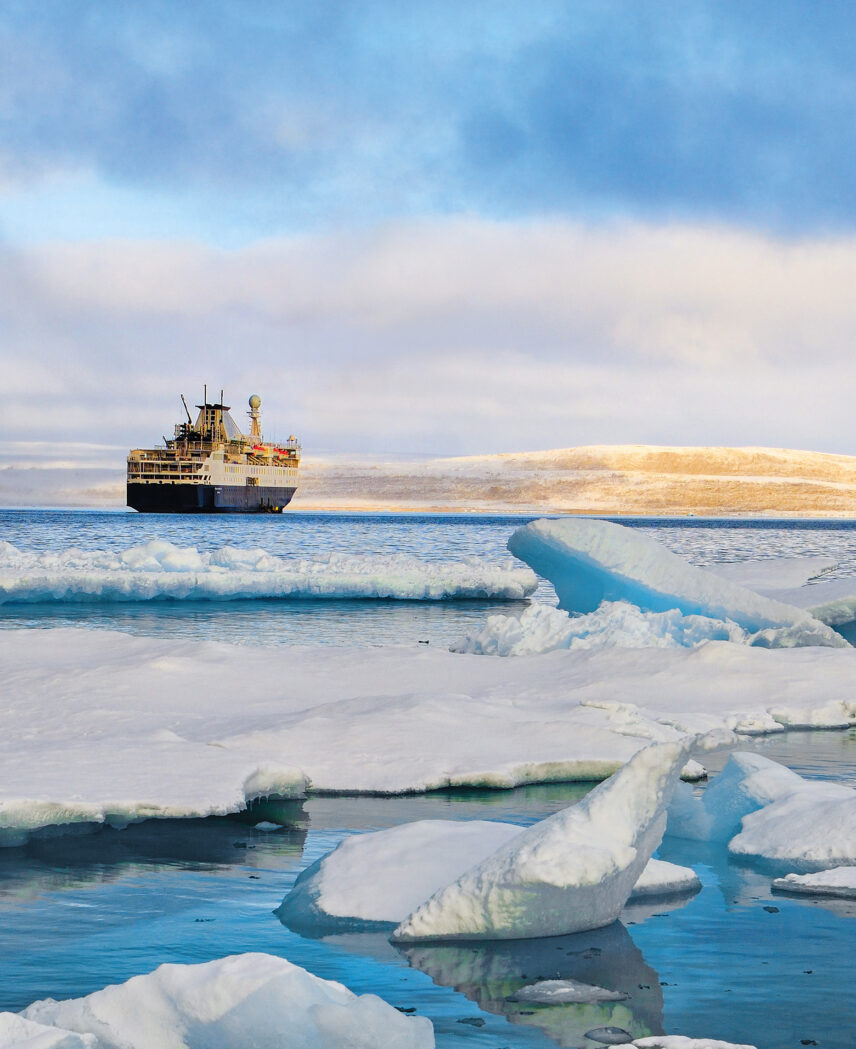
Photo: Bogner Bog
The Ocean Endeavour
The Ocean Endeavour is a 198-passenger ice-strengthened vessel with twenty Zodiacs, advanced navigation equipment and stabilizers. A doctor, paramedic and medical clinic offer complete peace of mind. The ship has several lounge areas, a library and multiple viewing decks, where you can relax by yourself or with your newfound crew.
Ship Specifications
Capacity: 198 passengers
Crew: 124
Registry: Bahamas
Ice Class: 1B
Length: 137 metres (450ft)
Breadth: 21 metres (19ft)
Draft: 5.8 metres (19ft)
Cruising Speed: 15 knots
Safety Features: 6 fully enclosed lifeboats and 8 life rafts. The ship has an ice-strengthened hull and the lifeboat and life raft capacity exceeds SOLAS requirements with at least 25% additional capacity above the number of people on board.
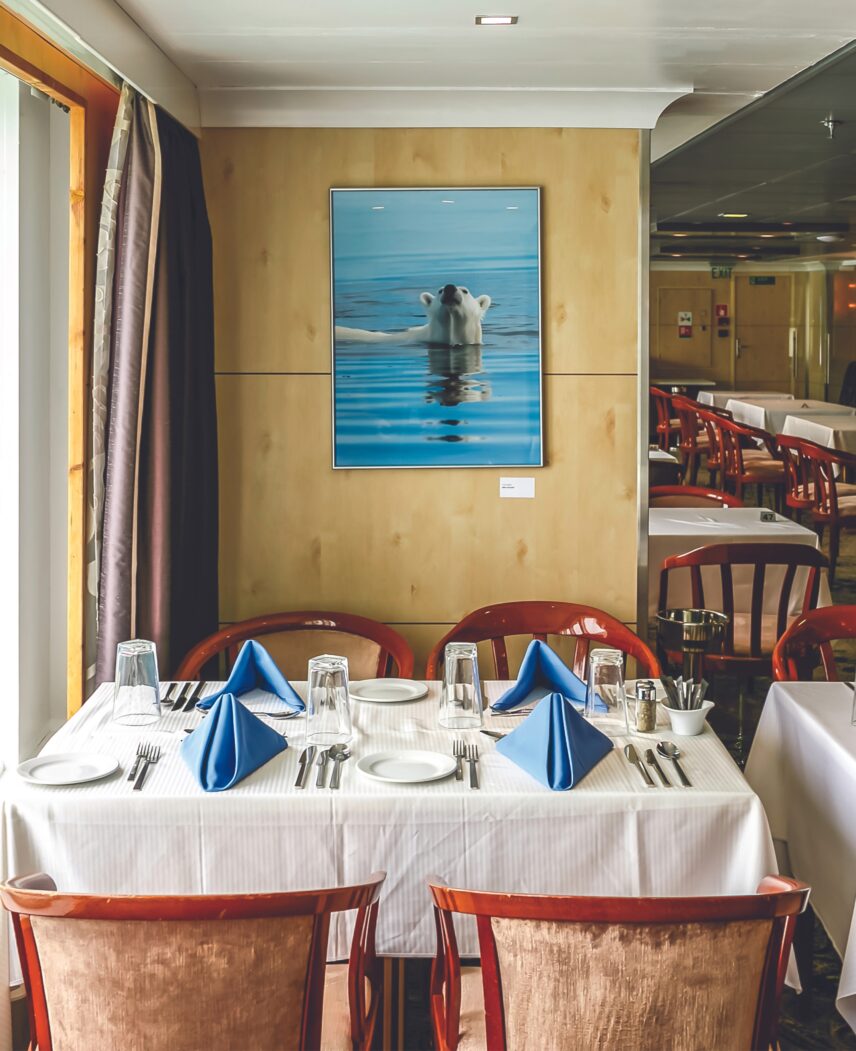
Food on Board
Enjoy open-seating meals in the roomy Polaris Restaurant, surrounded by ocean views. Adventure Canada staff mingle and share their expertise over meals. Breakfast and lunch include a wide variety of tasty and healthy choices. Globally inspired a la carte suppers offer options to suit every taste, including fish and vegetarian options. Desserts, made fresh daily, are a highlight! Food sensitivities, special diets, and personal choices can be accommodated with advance notice. Early-bird breakfast, afternoon tea, late-night snacks, and treats round out the offerings. And tea, coffee, and cookies are always available!
Life on Board
Life aboard Ocean Endeavour is as relaxed or as engaged as you want it to be. The onboard spa, library, hot tub, sauna, gift shop, multiple lounges, and viewing areas offer comfort and ease. Our programming is designed to enhance your understanding and appreciation of the regions we visit. Presentations, workshops, entertainment, and special events complete the excursions. From dances to polar plunges, from lounge concerts to theme parties, we love to have a great time together!
Choose Your Cabin
Below are details about the cabin options available. All cabins are shared with one of your new Wild Women friends. However, the earlier you book, the more likely you are to be paired with your travel companion.
Cabin Category 7
Select Twin
- Picture windows, unobstructed view
- Two lower berths
- Private bath
- Hair dryer, bathrobe, towels, body wash, and hair care products
- Intercom, telephone, and flat screen TV
- Approximately 190 square feet
Cabin Category 6
Comfort Twin
- Two porthole windows, unobstructed view
- Two lower berths
- Private bath
- Hair dryer, bathrobe, towels, body wash, and hair care products
- Intercom, telephone, and flat screen tv
- Approximately 175 square feet
Cabin Category 5
Main Twin
- Picture windows, unobstructed view
- Two lower berths
- Private bath
- Hair dryer, bathrobe, towels, body wash, and hair care products
- Intercom, telephone, and flat screen tv
- Approximately 115 square feet
Cabin Category 4
Exterior Twin
- Porthole window, unobstructed view
- Two lower berths
- Private bath
- Hair dryer, bathrobe, towels, body wash, and hair care products
- Intercom, telephone, and flat screen tv
- Approximately 100 square feet
Cabin Category 3
Interior Twin
- Interior cabin
- Two lower berths
- Private bath
- Hair dryer, bathrobe, towels, body wash, and hair care products
- Intercom, telephone, and flat screen tv
- Approximately 120 square feet
Cabin Category 2
Triple
- Interior cabin
- Three lower berths
- Two private baths
- Hair dryer, bathrobe, towels, body wash, and hair care products
- Intercom, telephone, and flat screen tv
- Approximately 200 square feet
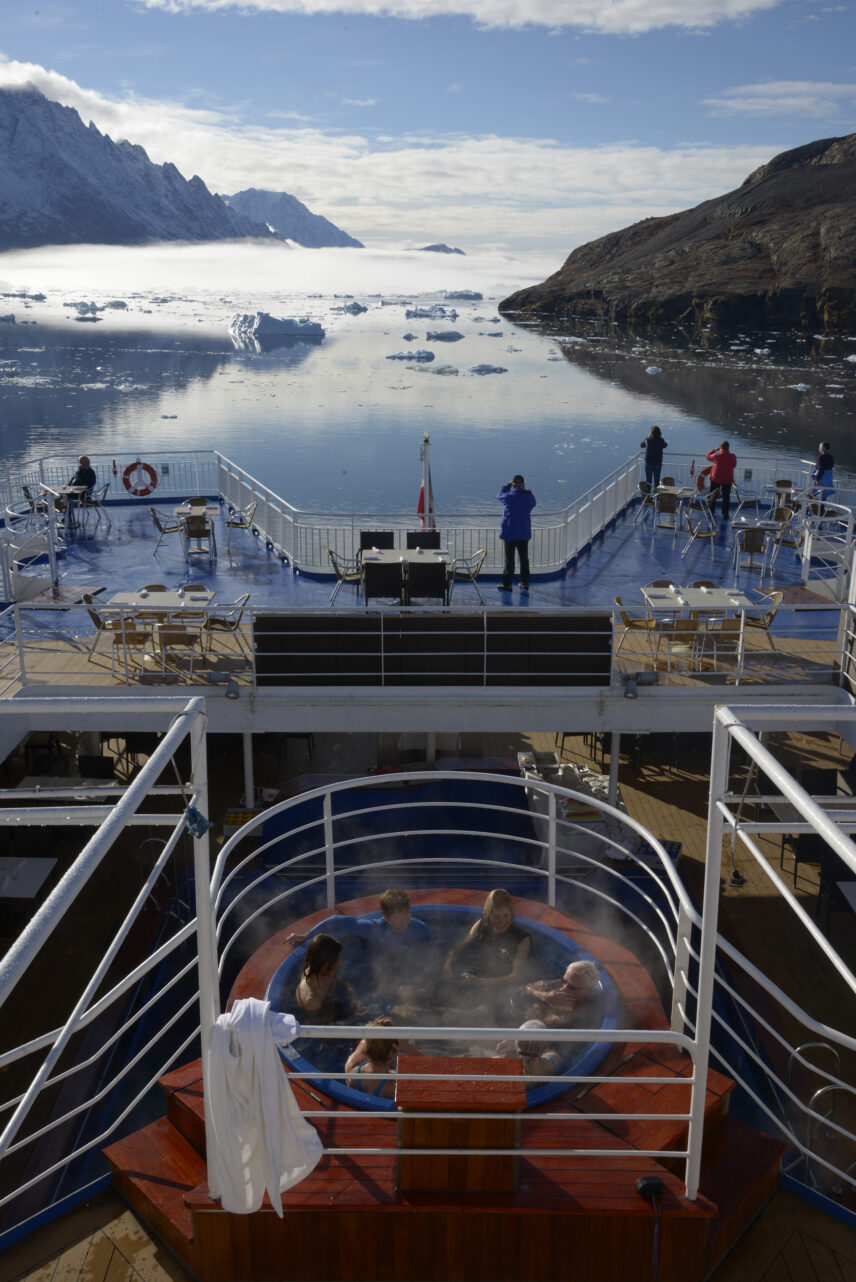
Hot Tub
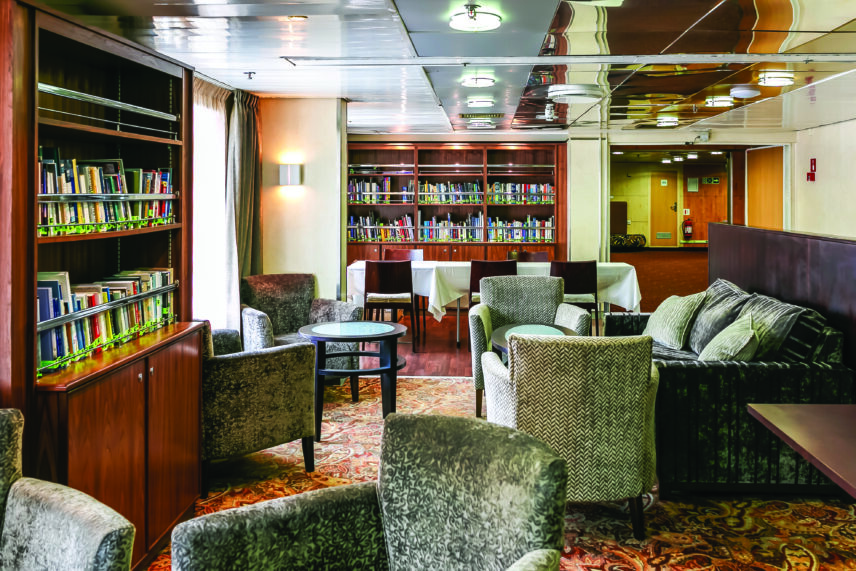
Compass Club – Library
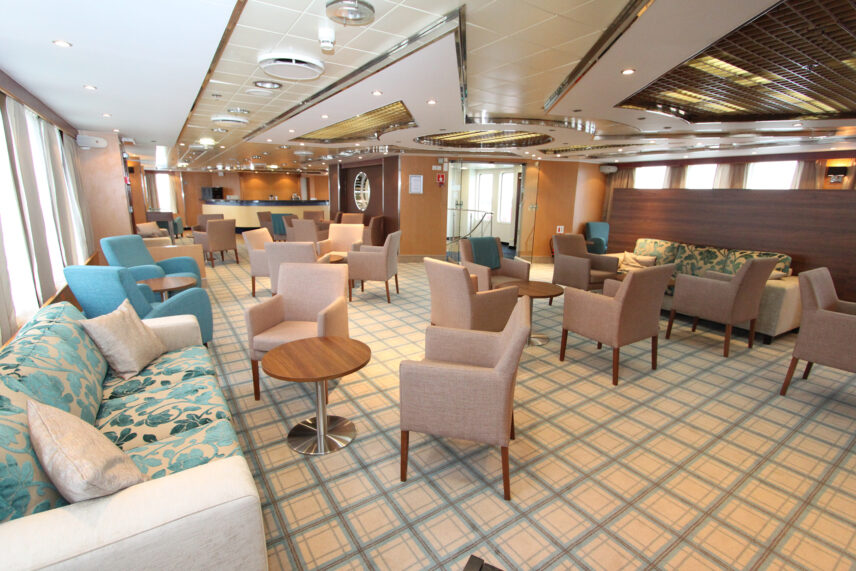
Meridian Club
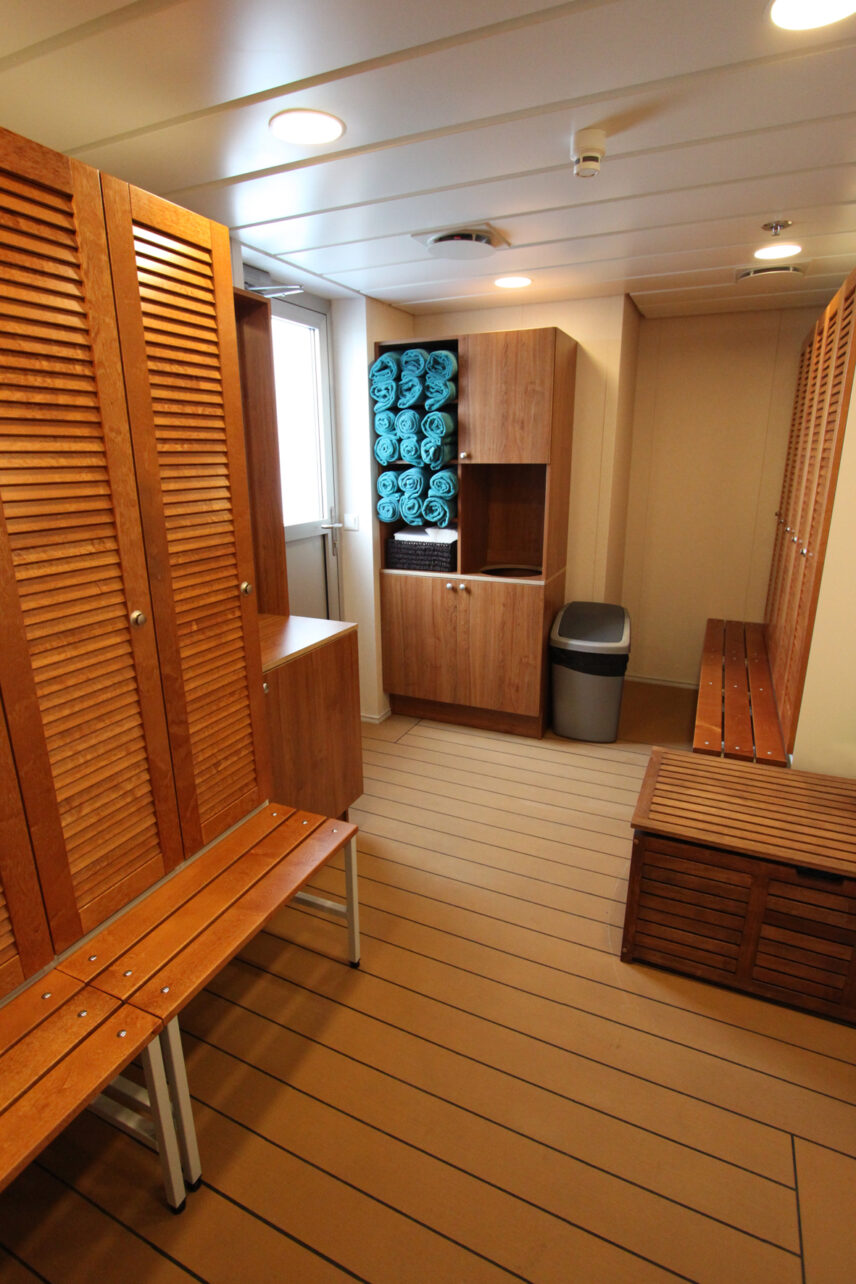
Sauna
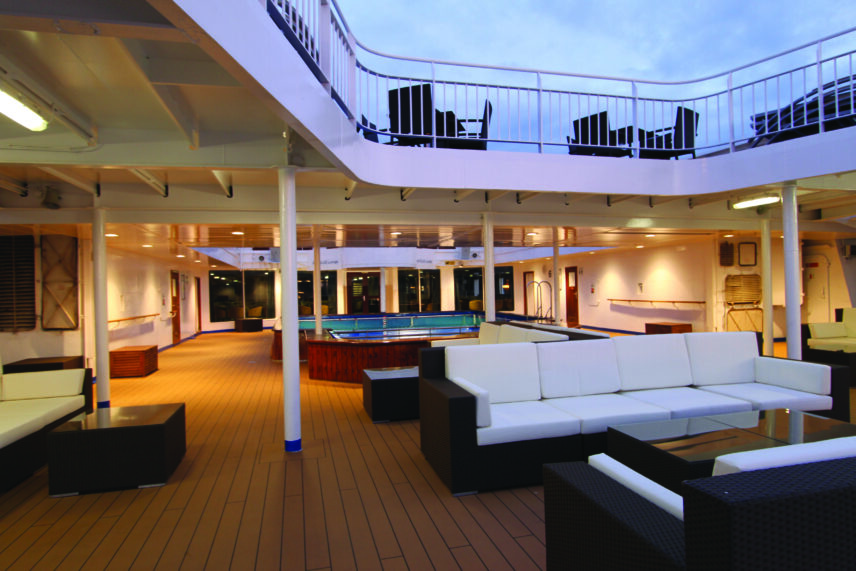
Pool Deck – Stern
Cabin Upgrades
While we have reserved the cabin options above, you may have the option to book a different cabin for an additional cost, subject to availability.
Cabin Category 10
Suite
- Forward-facing picture windows, unobstructed view
- Matrimonial bed (bigger than US double but smaller than a Queen)
- Private bath with full tub
- Refrigerator
- Hair dryer, bathrobe, towels, body wash, and hair care products
- Intercom, telephone, and flat screen tv
- Approximately 310 square feet
Cabin Category 9
Junior Suite
- Picture windows, unobstructed view
- Matrimonial bed (bigger than US double but smaller than a Queen)
- Private bath
- Sitting area
- Refrigerator
- Hair dryer, bathrobe, towels, body wash, and hair care products
- Intercom, telephone, and flat screen tv
- Approximately 270 square feet
Cabin Category 8
Superior Twin
- Two picture windows, unobstructed view
- Two lower berths
- Private bath
- Sitting area
- Hair dryer, bathrobe, towels, body wash, and hair care products
- Intercom, telephone, and flat screen tv
- Approximately 210 square feet
Cabin Category 1
Quad
- Interior cabin
- Four lower berths
- Private bath
- Hair dryer, bathrobe, towels, body wash, and hair care products
- Intercom, telephone, and flat screen tv
- Approximately 240 square feet

Trip Details
The Ocean Endeavour
While you’ll be with the Wild Women group, this isn’t an exclusive Wild Women Expeditions or 100% women-only trip. The Wild Women group size can range from 10 to 40 women, but there will be other passengers along for the journey. In addition, the staff and crew of the Ocean Endeavour, a 198-passenger ship, will also be co-ed.
Our Expedition Cruise Partner’s Client Portal
Approximately three to four months prior to departure, you will receive an email with a unique URL link to our partner’s information portal. Please carefully and thoroughly complete these forms with your current personal and medical information, dietary preferences or requirements and other information as requested.
Your Guide to the Arctic
Click HERE for a more in-depth guide to all of the historical and logistical details you’ll need to know prior to departure—including what you can expect on this expedition and the packing list.
Arrival and Departure
This expedition in 2024 starts in Ottawa, Ontario (airport code: YOW) and finishes in Toronto, Ontario (airport code: YYZ).
In 2025, this expedition is the reverse. Trip starts in Toronto, Ontario (YYZ) and finishes in Ottawa, Ontario (airport code: YOW).
The Wild Women Way
If you’re wondering how we roll, it’s together. The Wild Women Way is our modus operandi, our mantra and our rock solid foundation. You can learn more about our Wild Ways HERE.

How We Support You
Ready for a big adventure? On this trip we brave the elements, hike uneven coastal terrain and have several Zodiac transfers (from the ship to Zodiac and from Zodiac to shore). Yes, it can be a challenge, but you’re never alone. Like thousands of women before you, you’ll draw on the strength you didn’t know you had and tap into your inner explorer.
Like all our trips, this trip can be scaled to suit different abilities and comfort levels. If you have concerns or reservations about your ability to complete or enjoy this trip due to any physical or medical reasons, please contact us and let’s talk about it.
What the Trip Entails
- Entering and exiting the Zodiacs
- Maneuvering around tight spaces
- Walking on uneven terrain
- Being on a boat for an extended period of time
- Due to strong currents, there may be moderate movement on the vessel while navigating (most passengers are not affected)
- If you choose to go on the kayaking excursions, some kayaking experience is required
- Please note that Wild Women small ship expeditions are not 100% Wild Women exclusive or women-only. Staff, crew and fellow passengers on the Ocean Endeavour will be co-ed
- Physical Rating: Easy (Some physical activity included. Trips are the most leisurely with an average of 1-4 hours of physical activity each day.)
